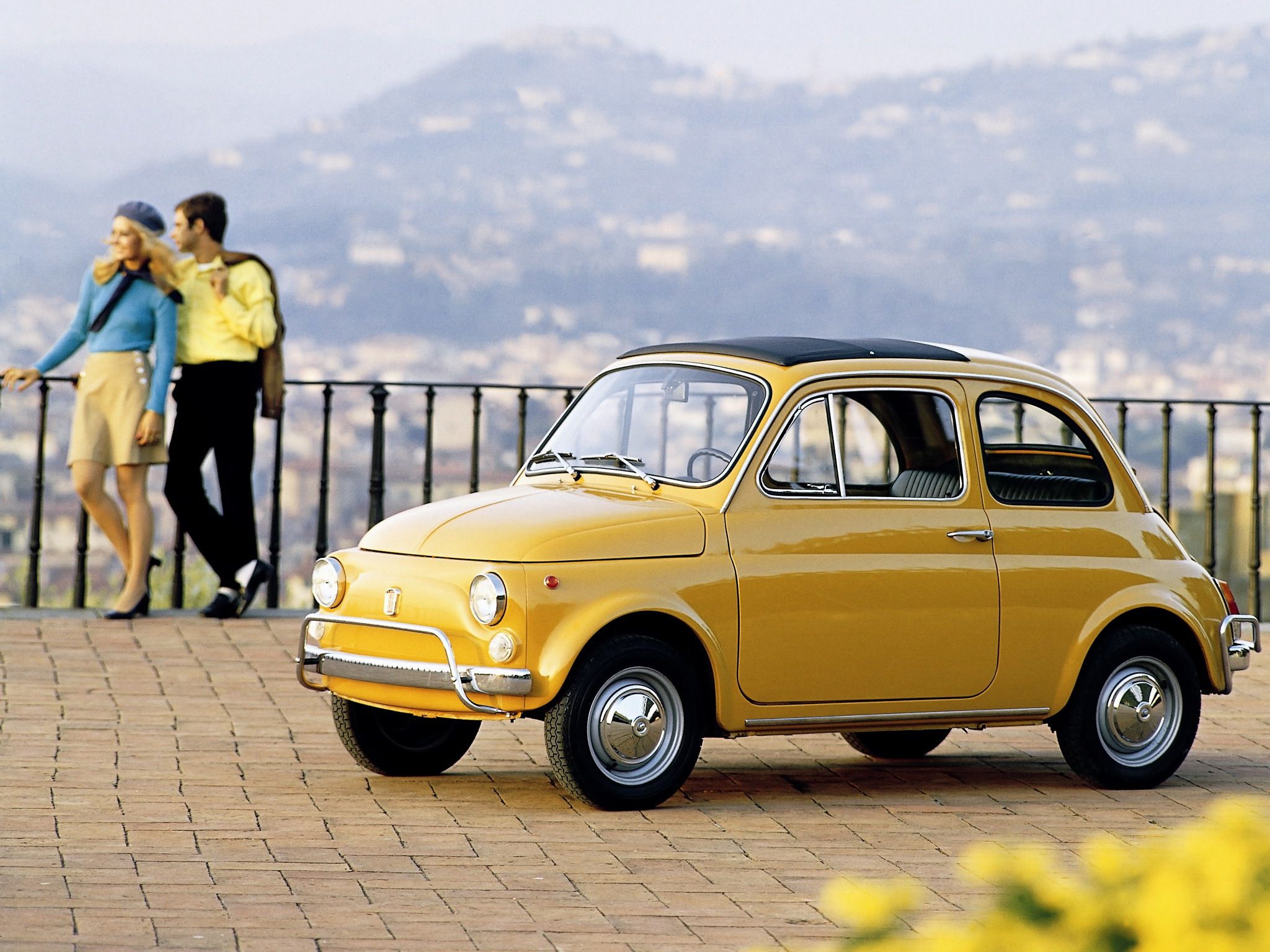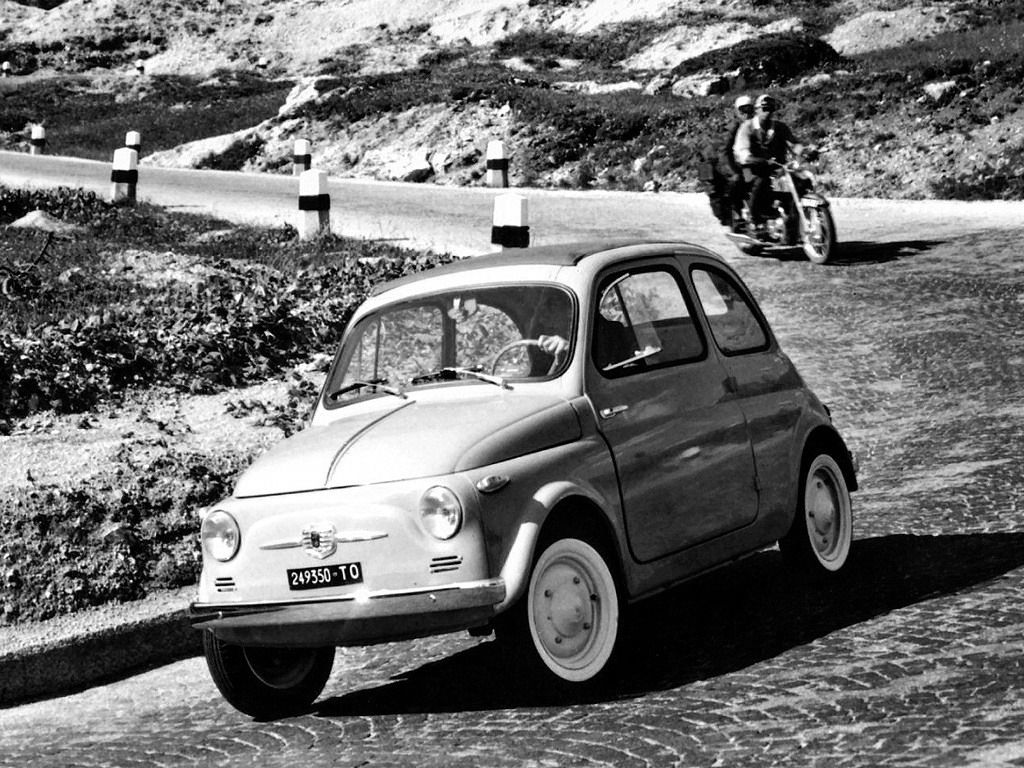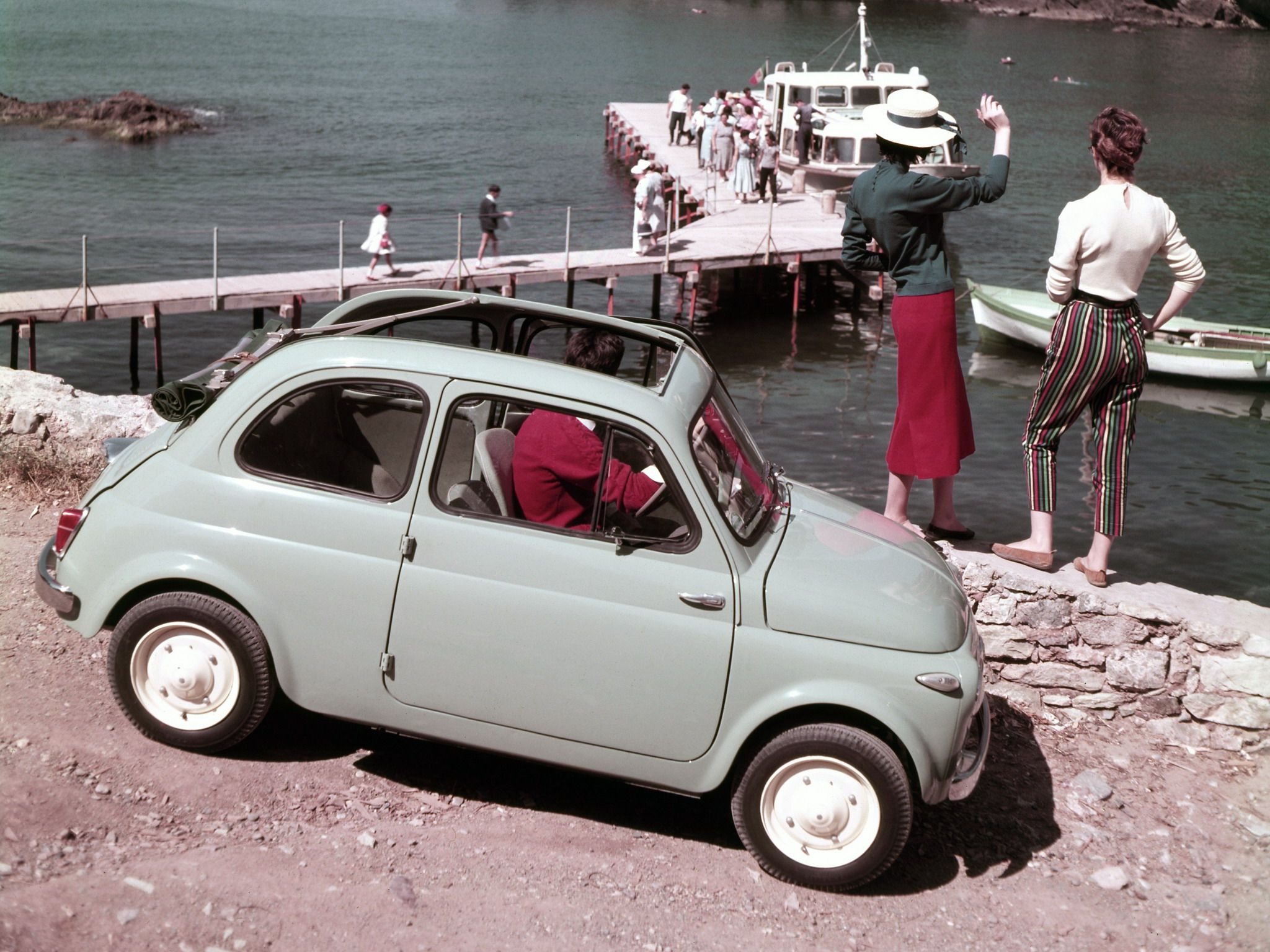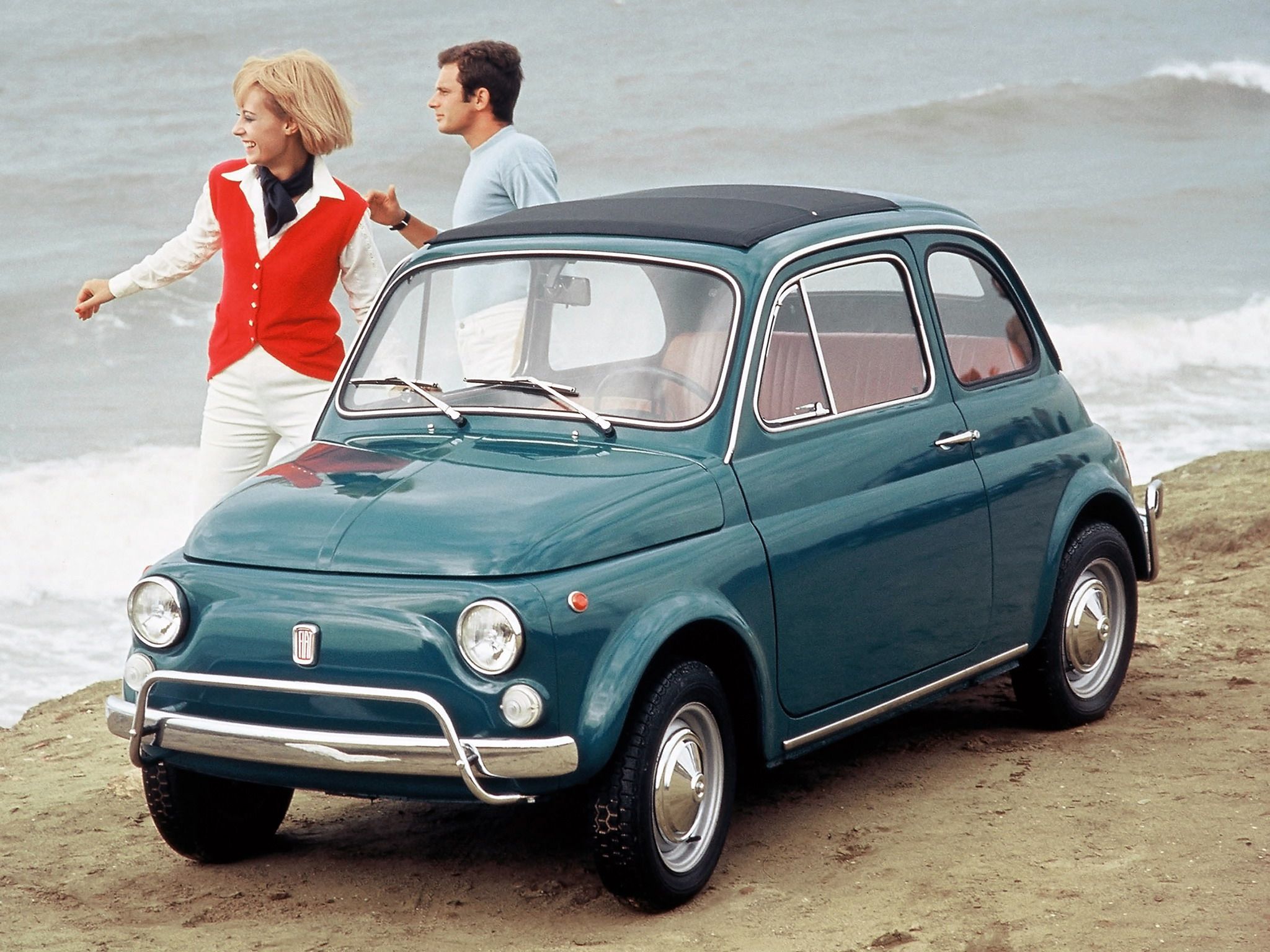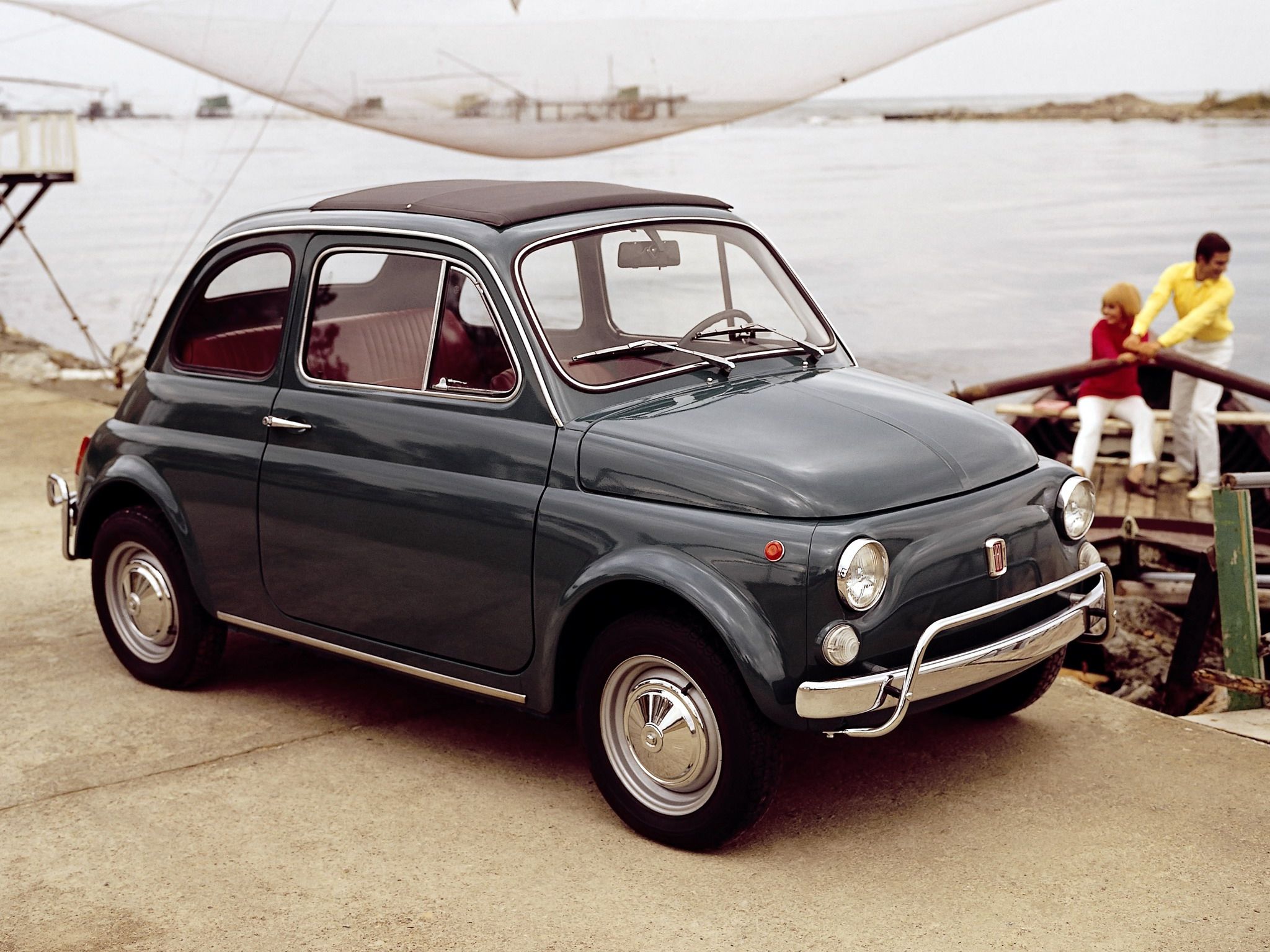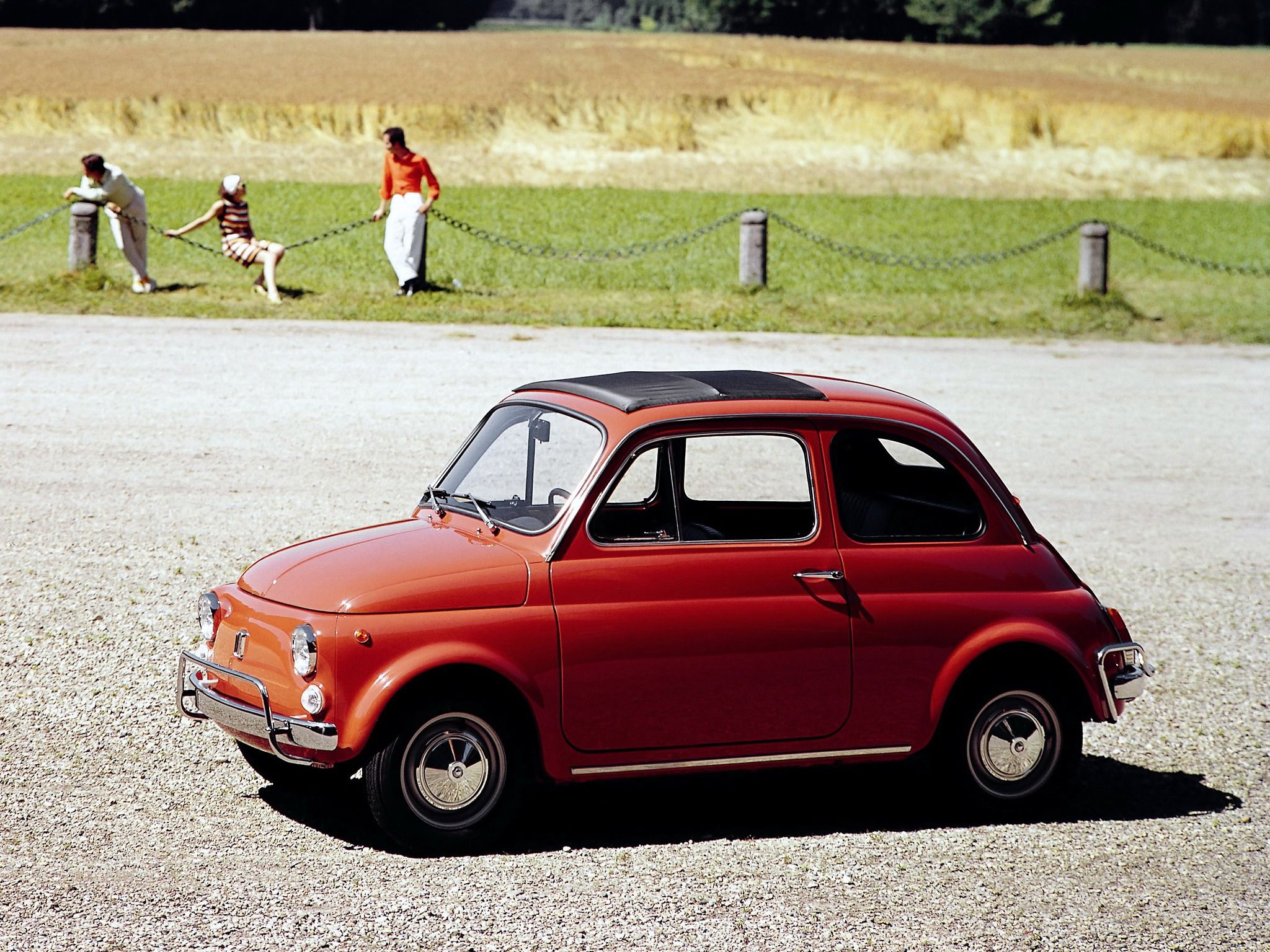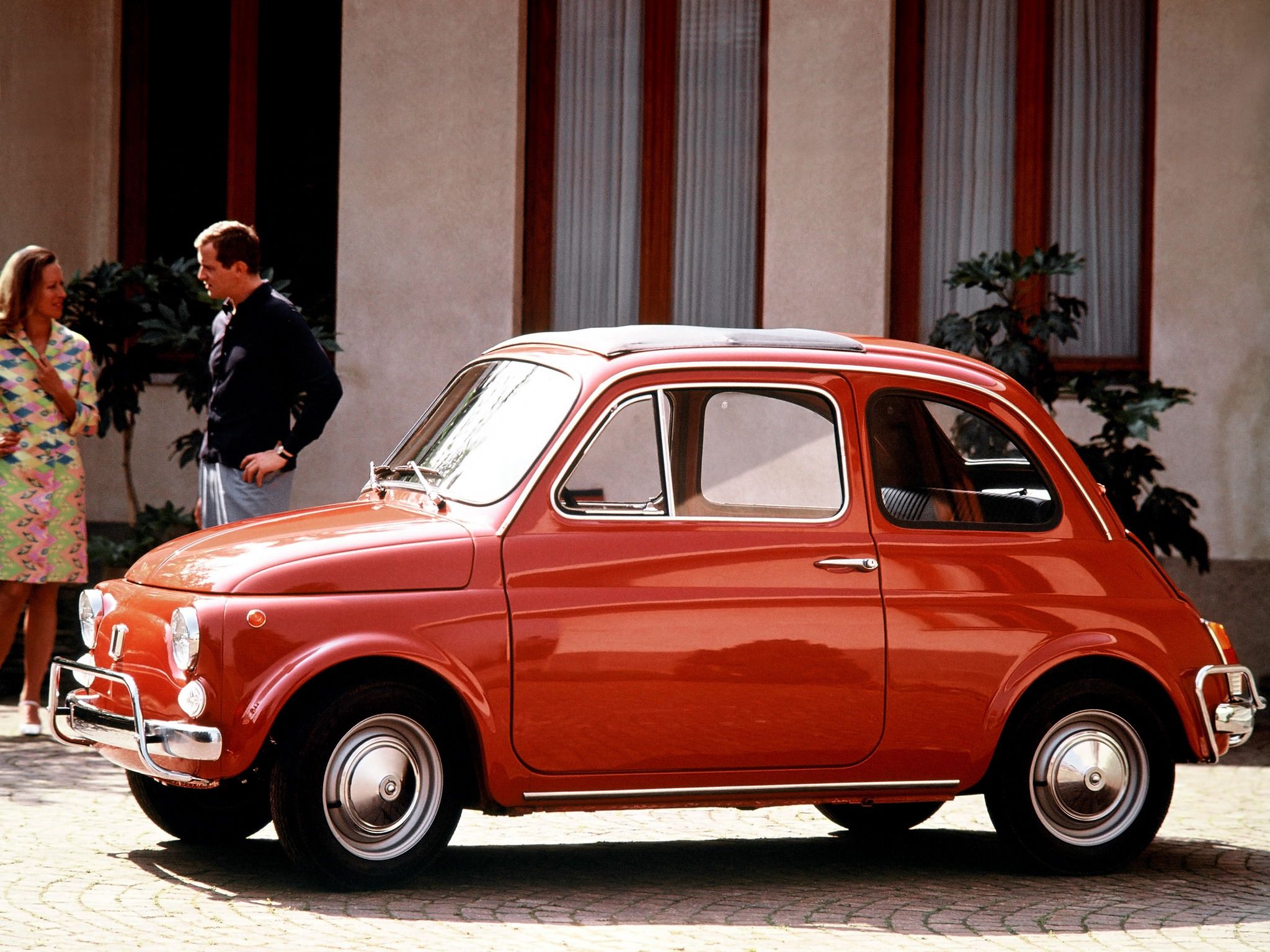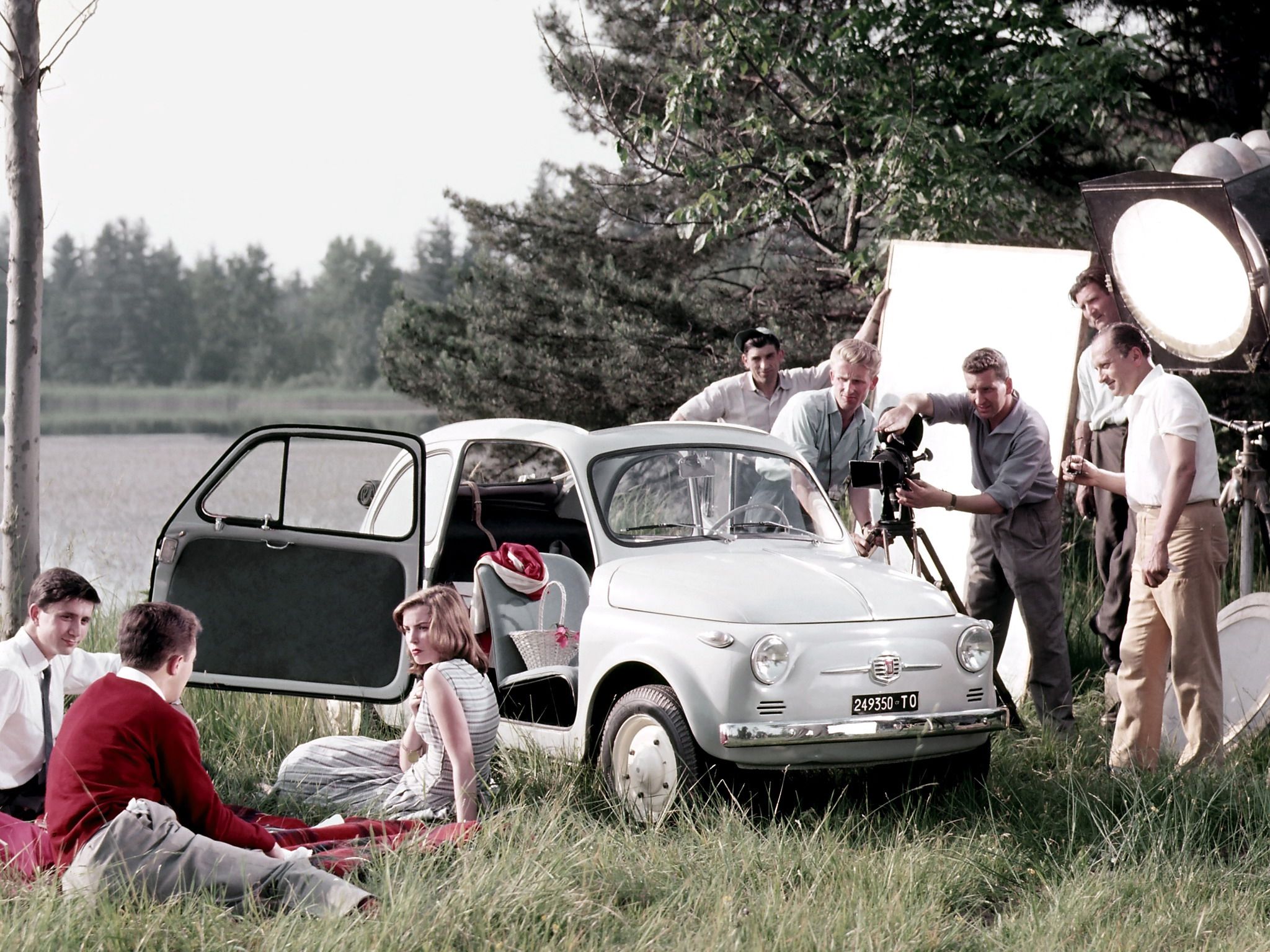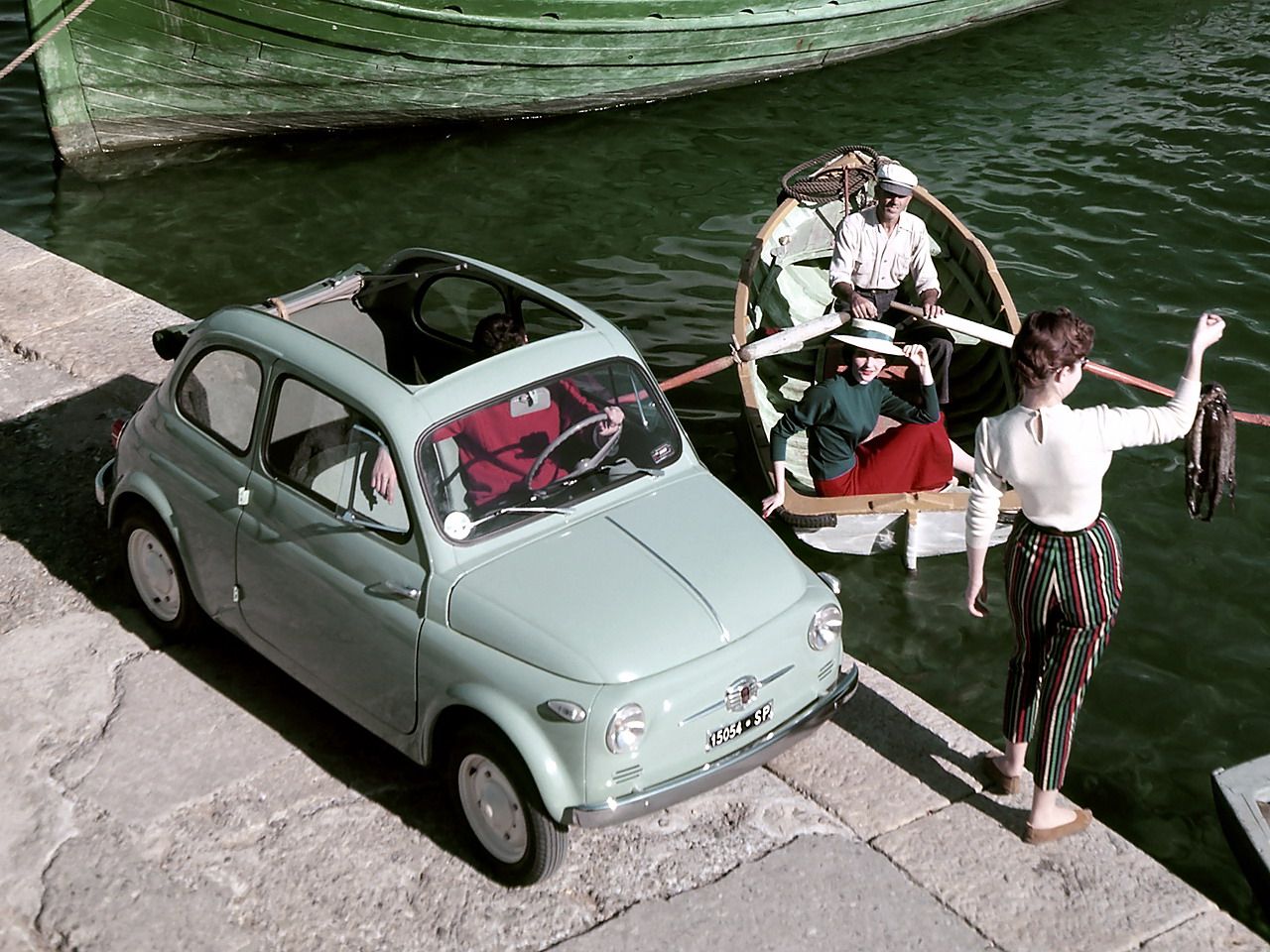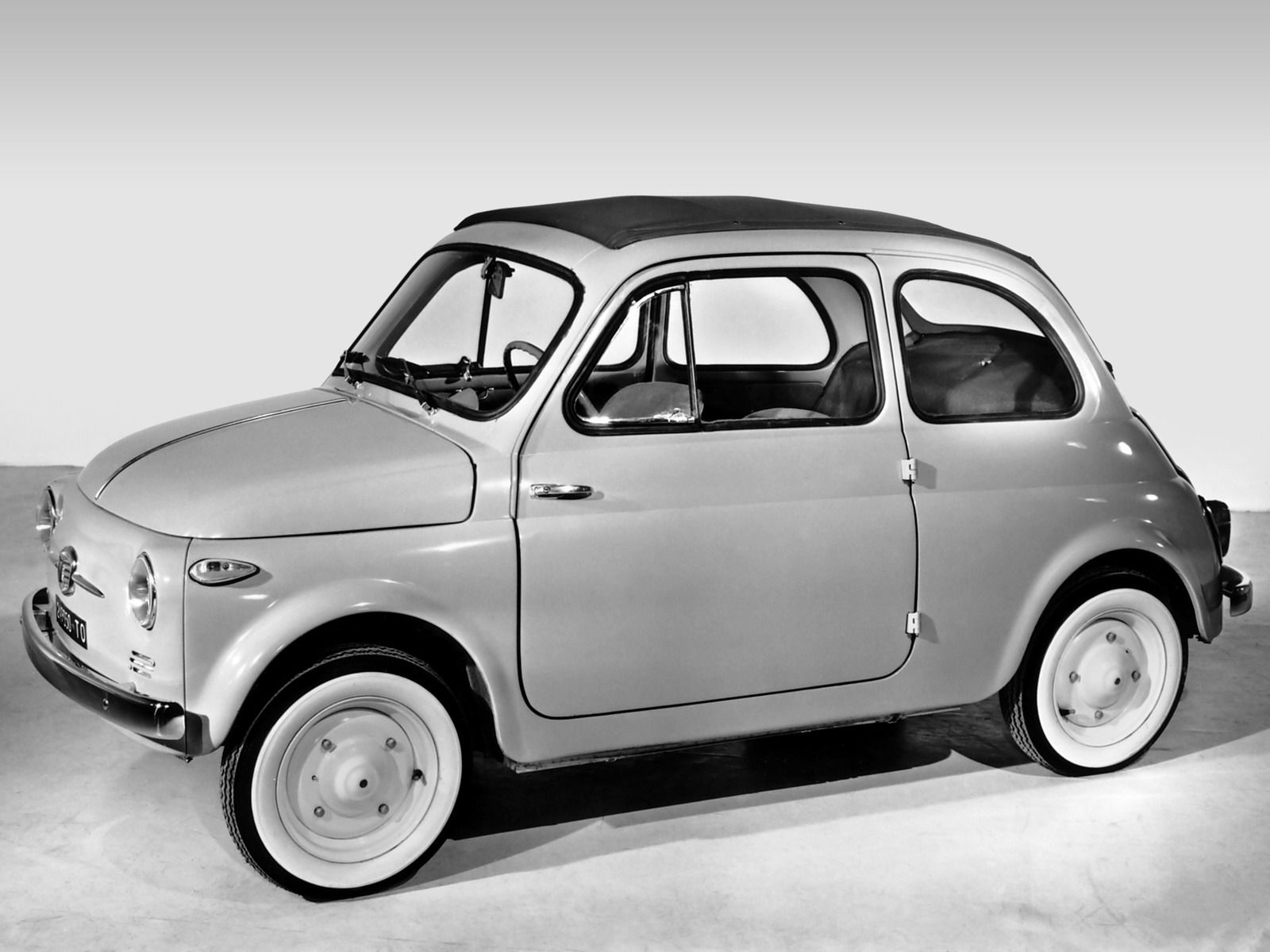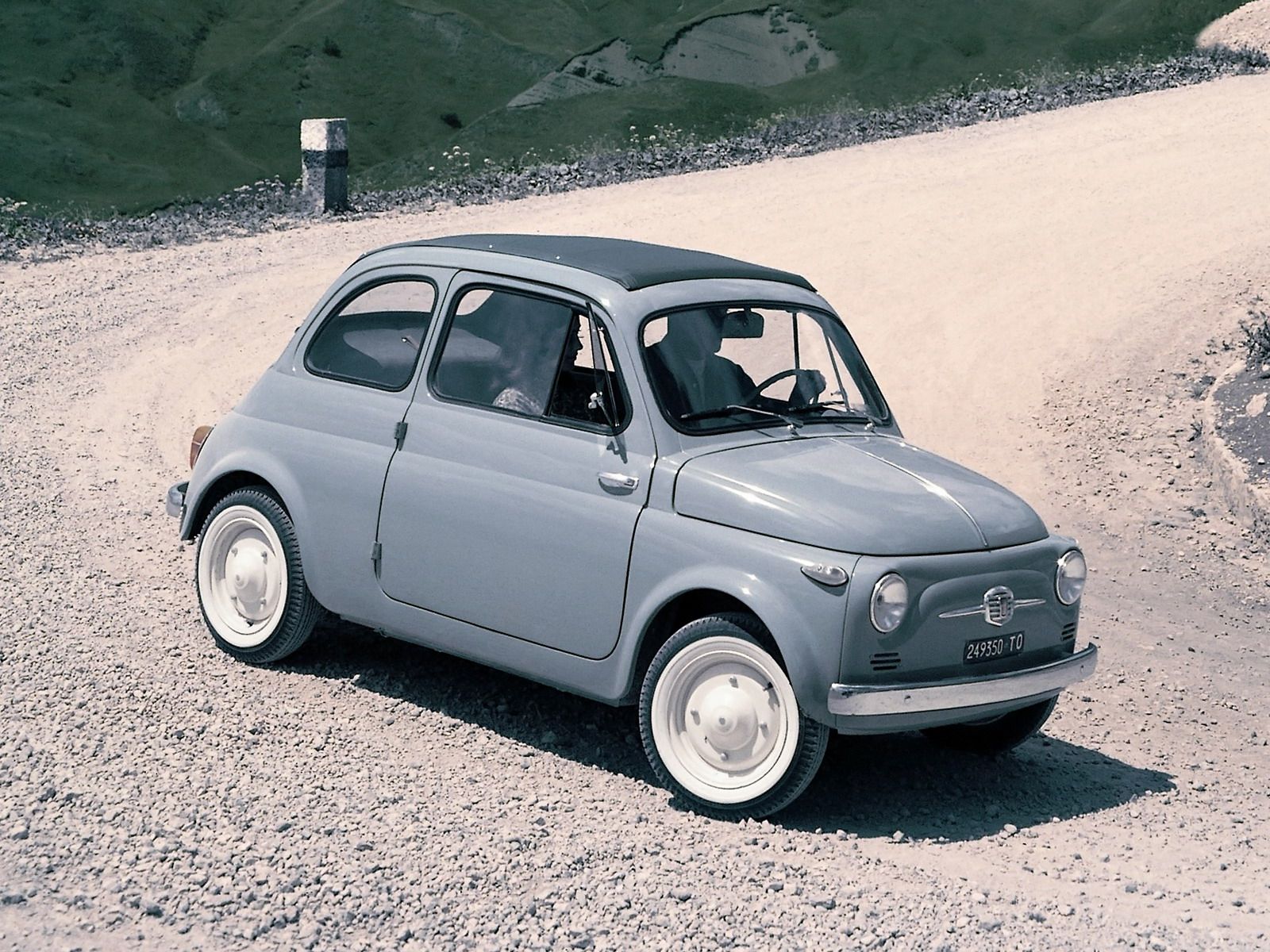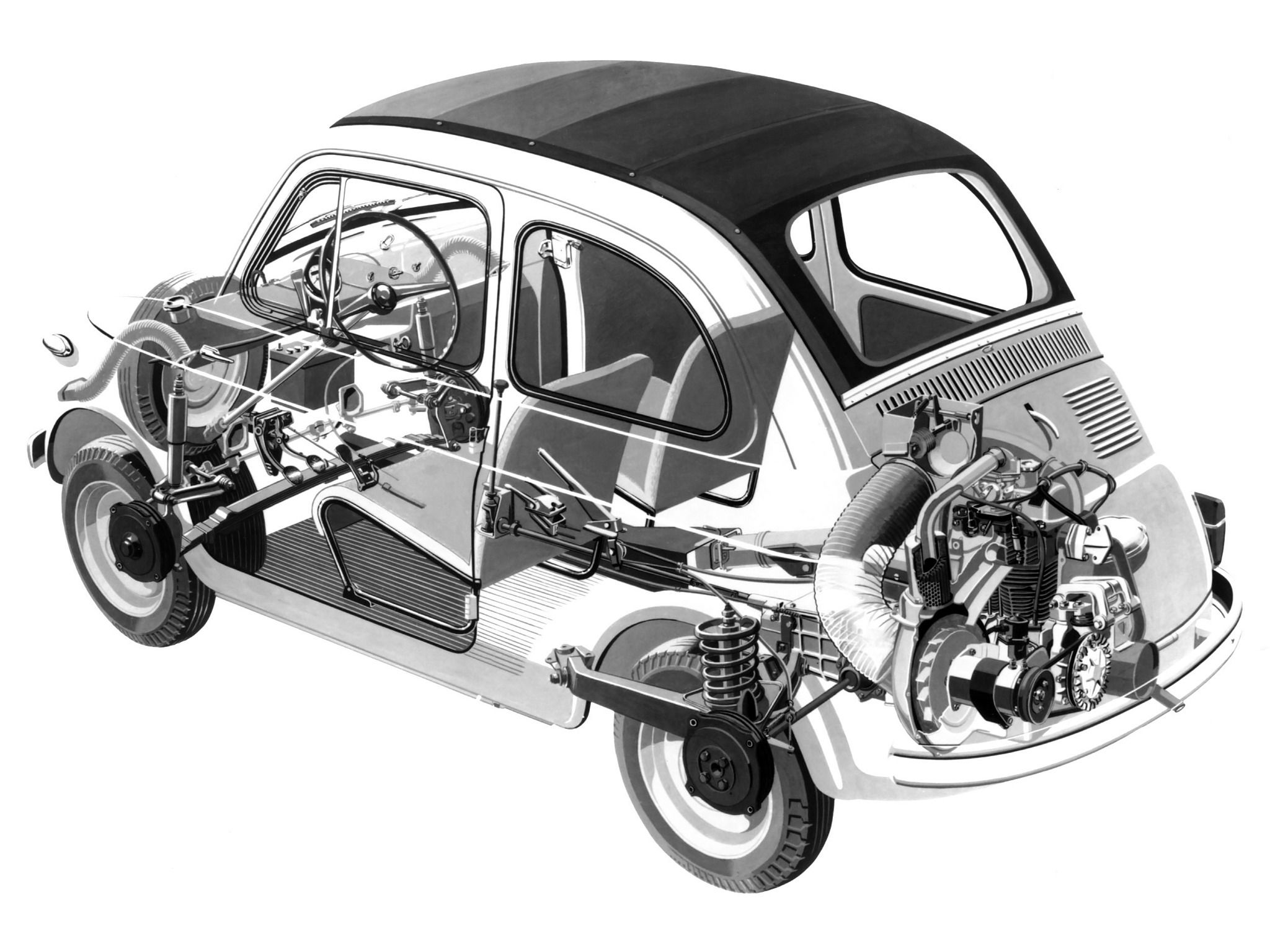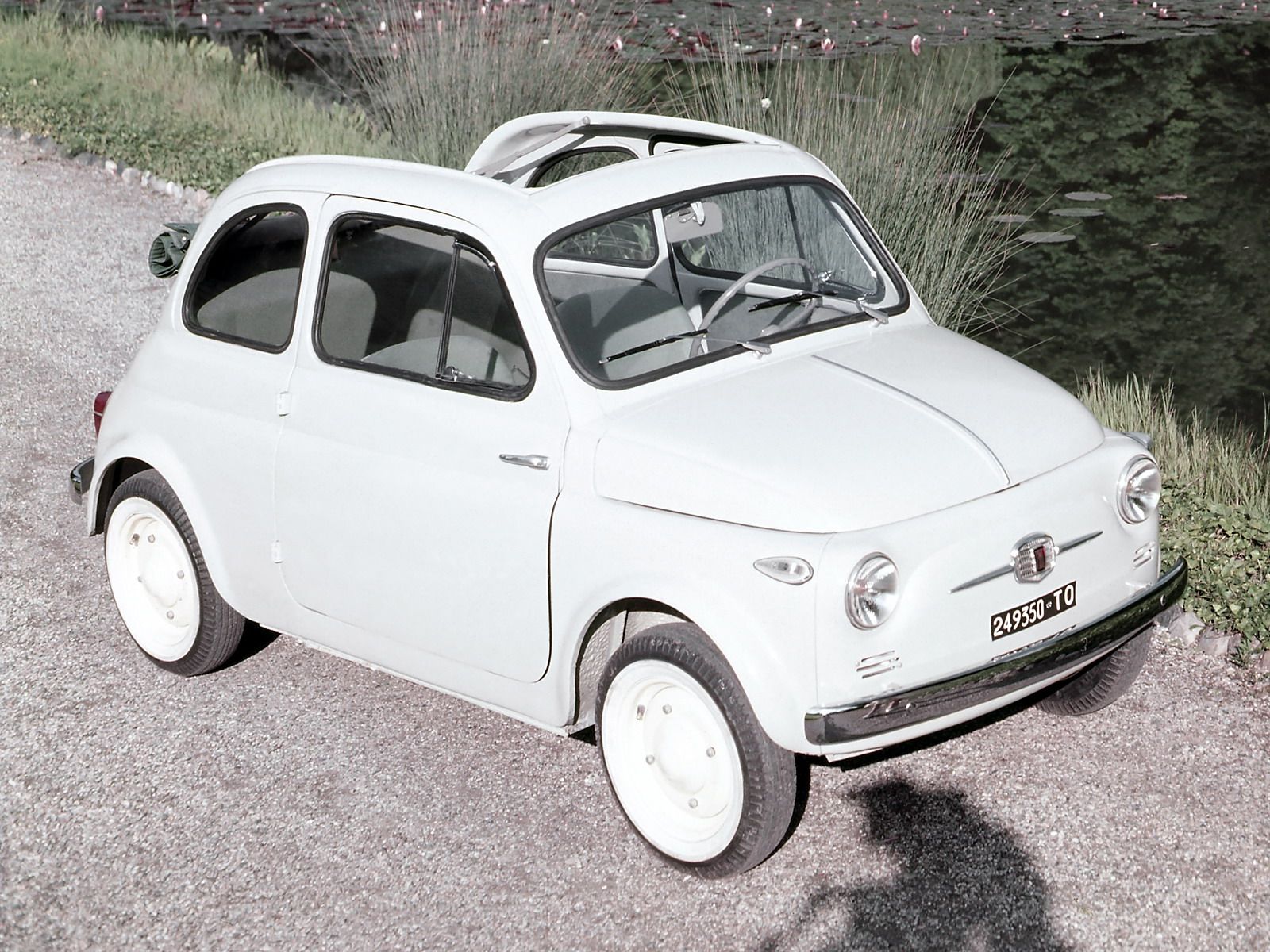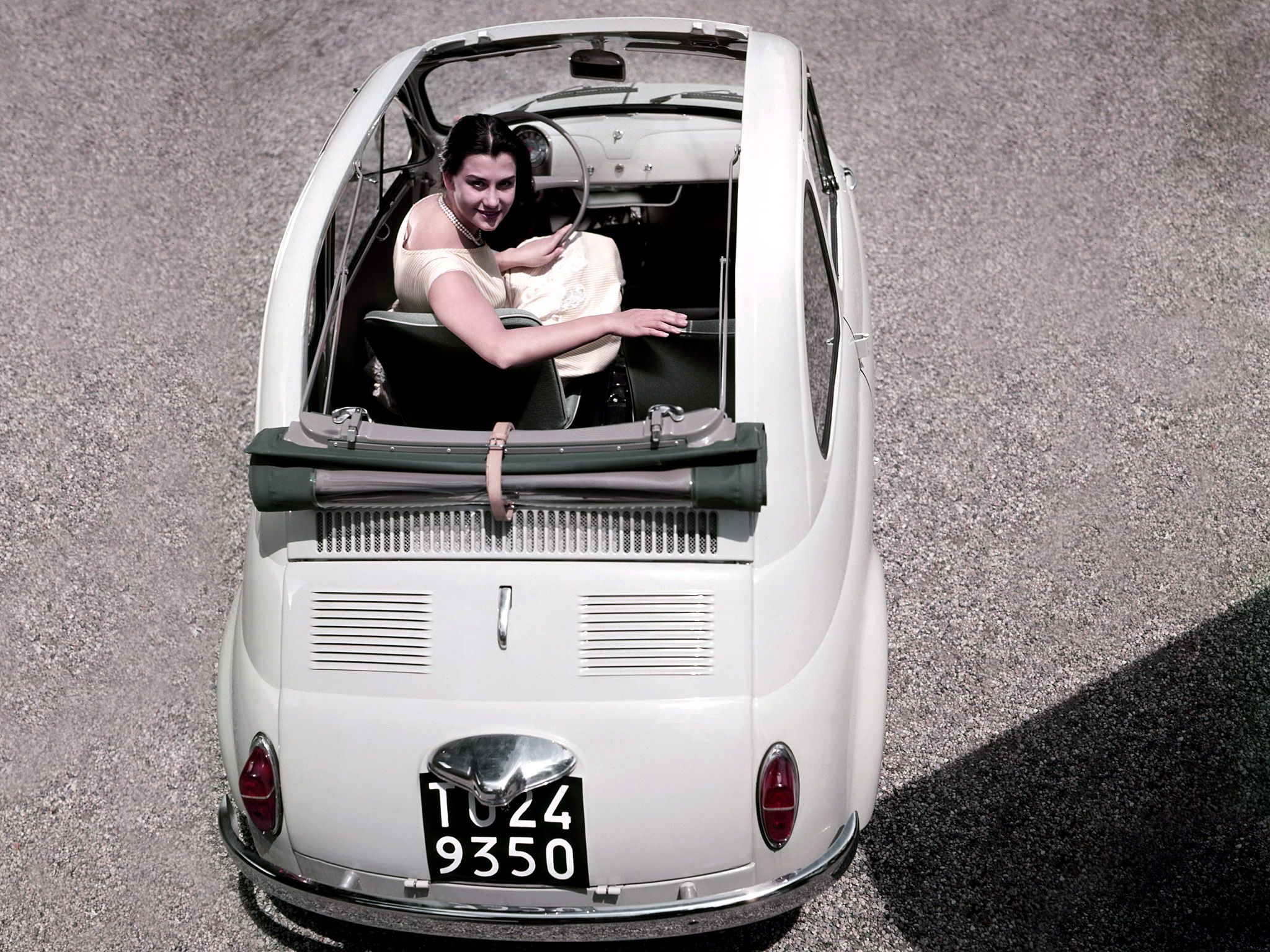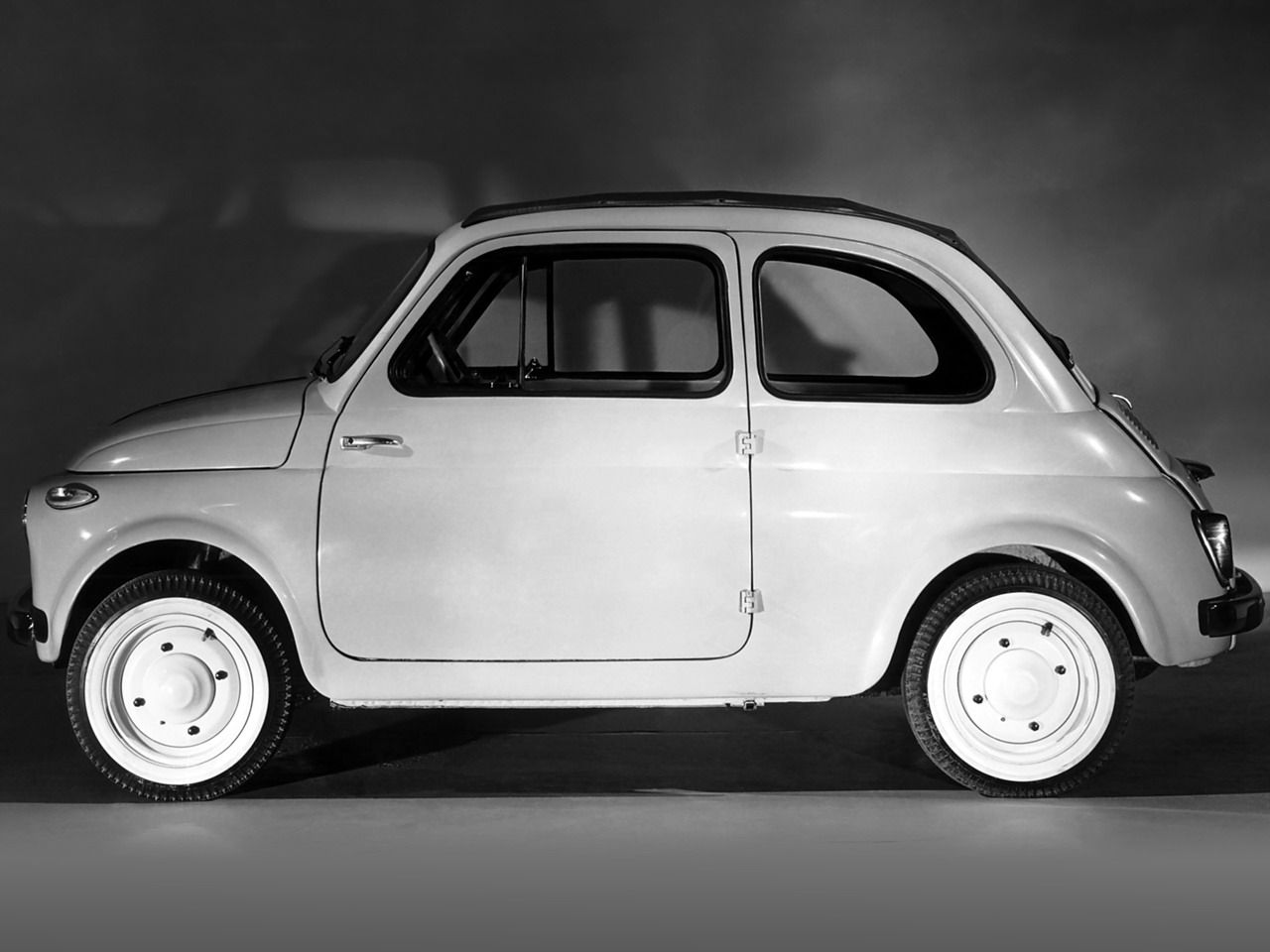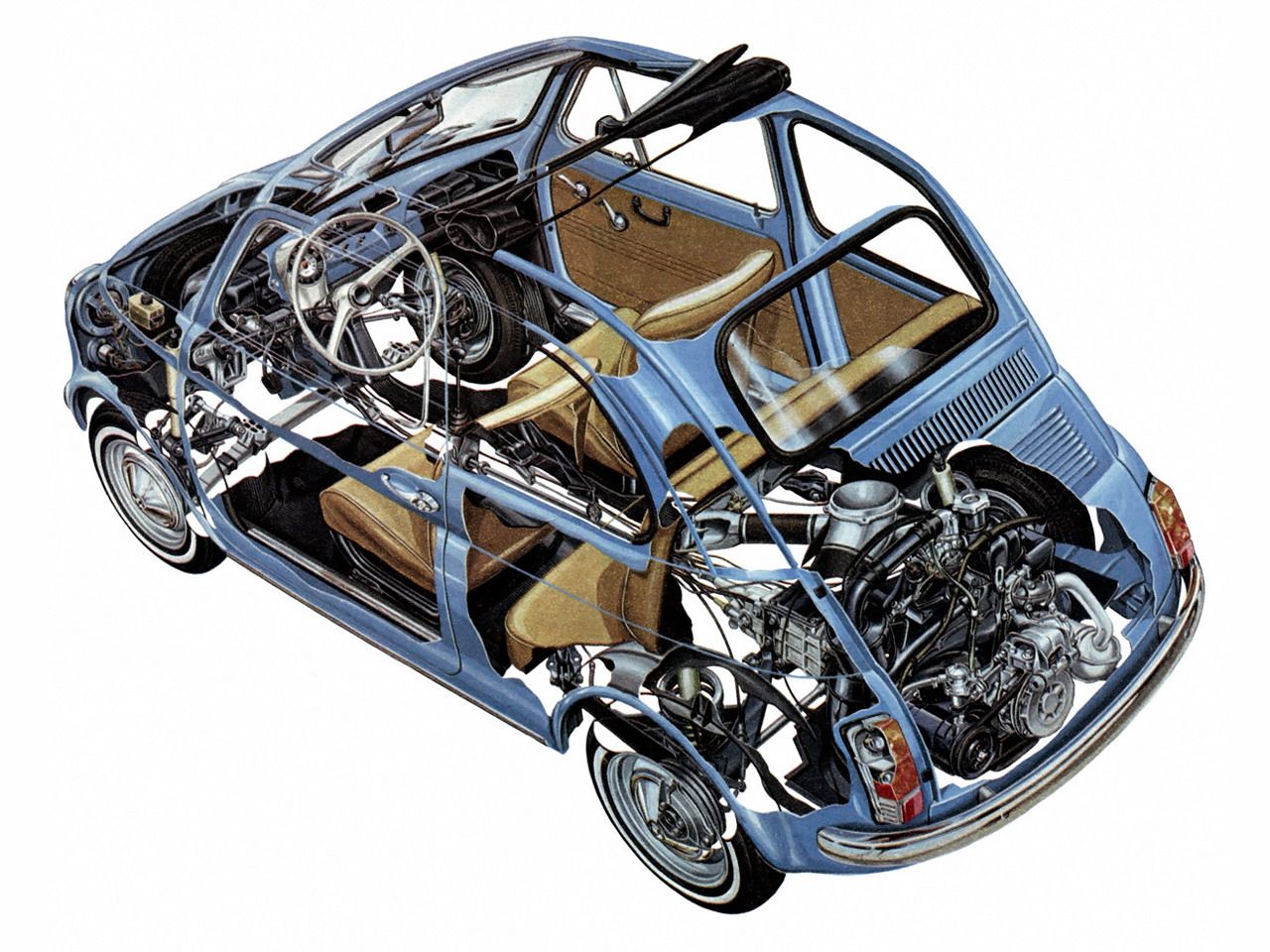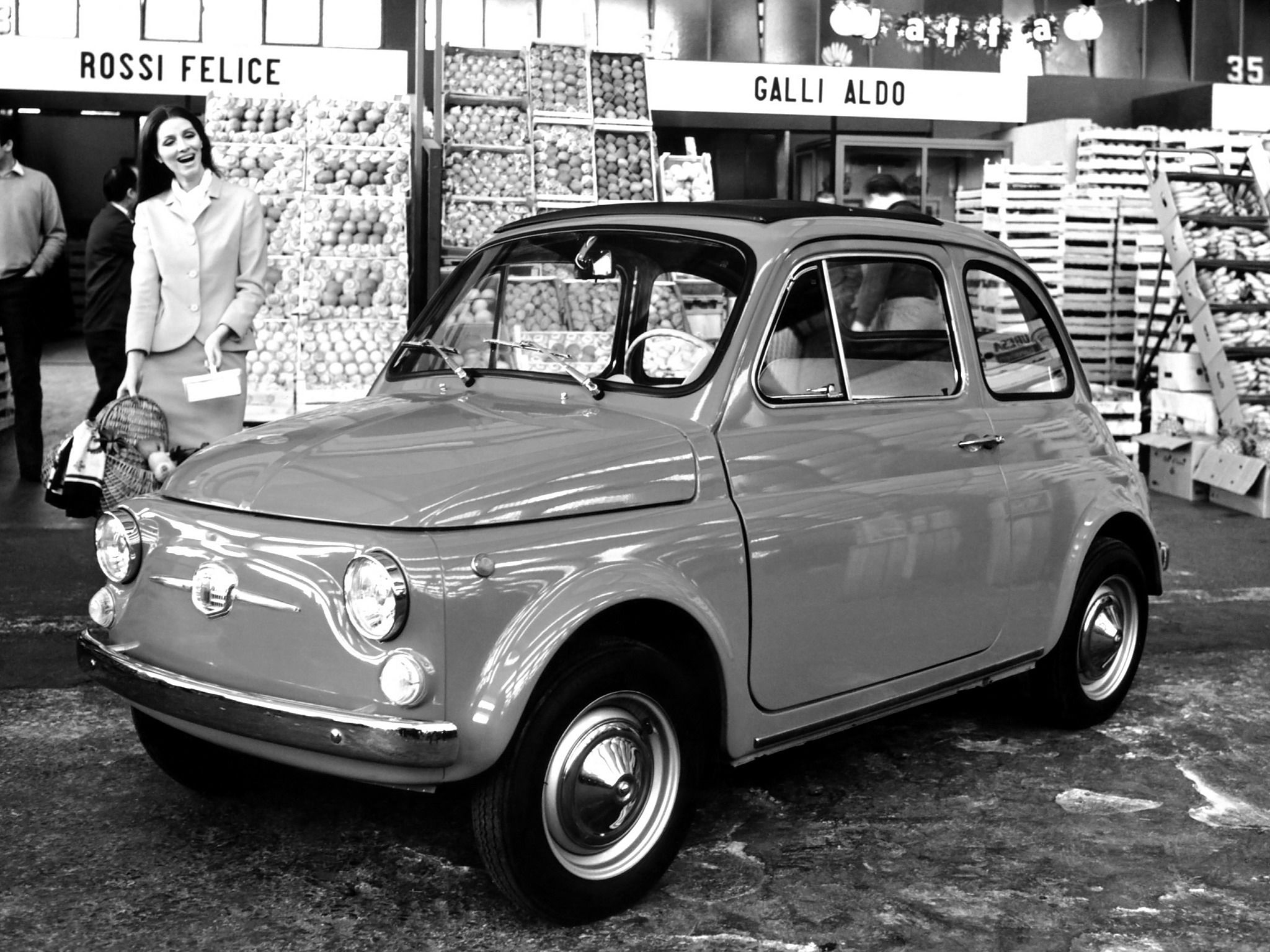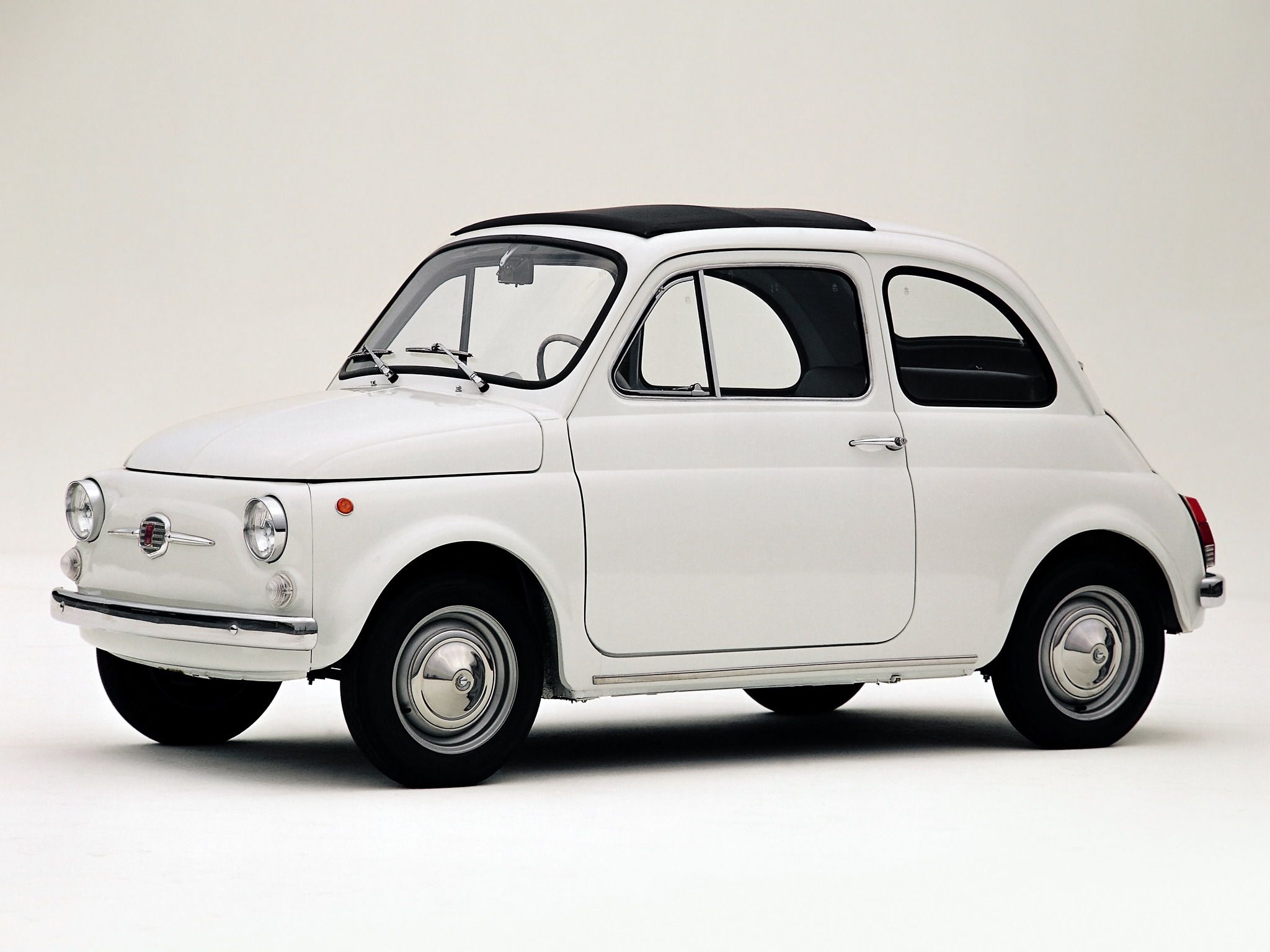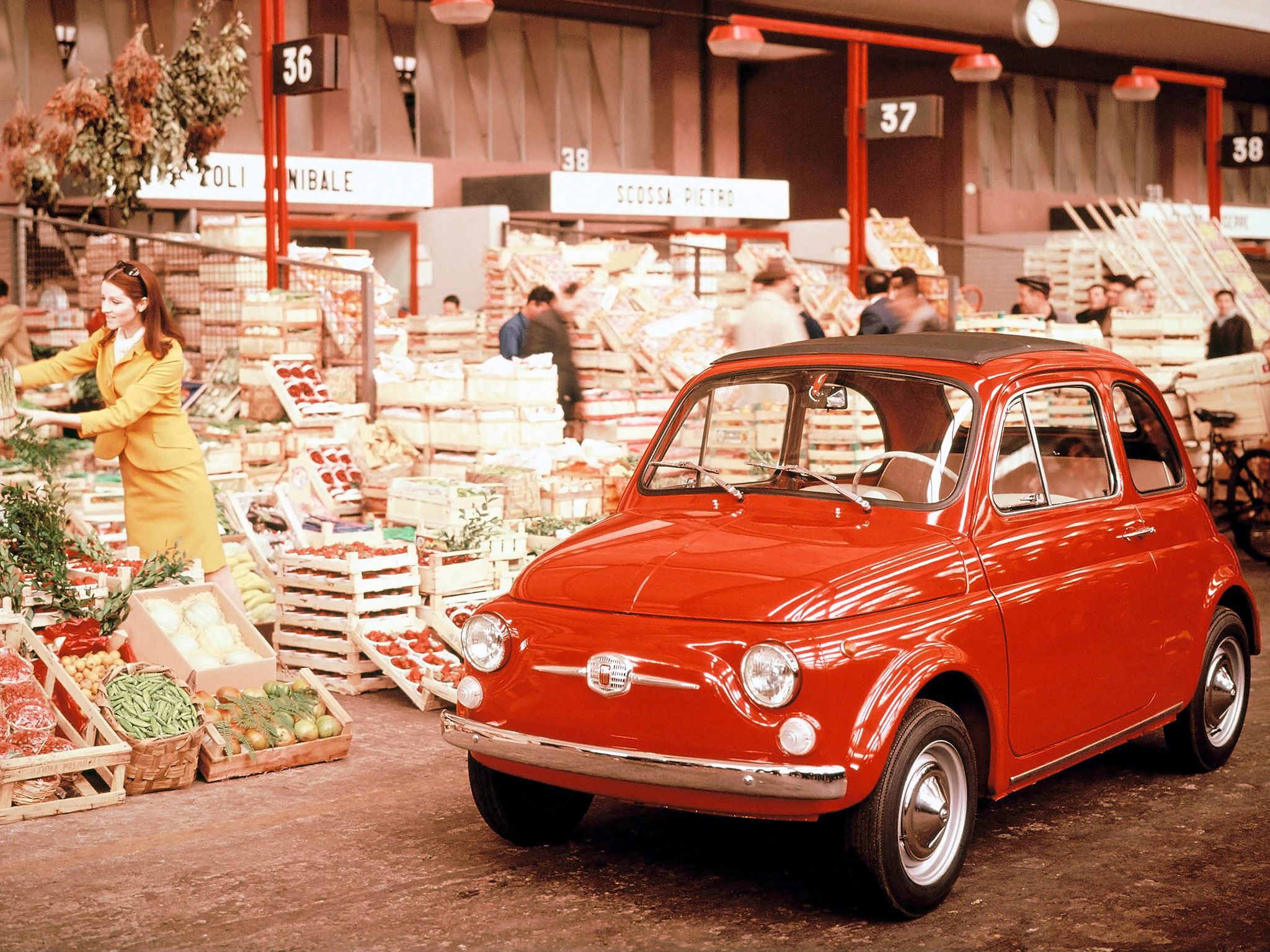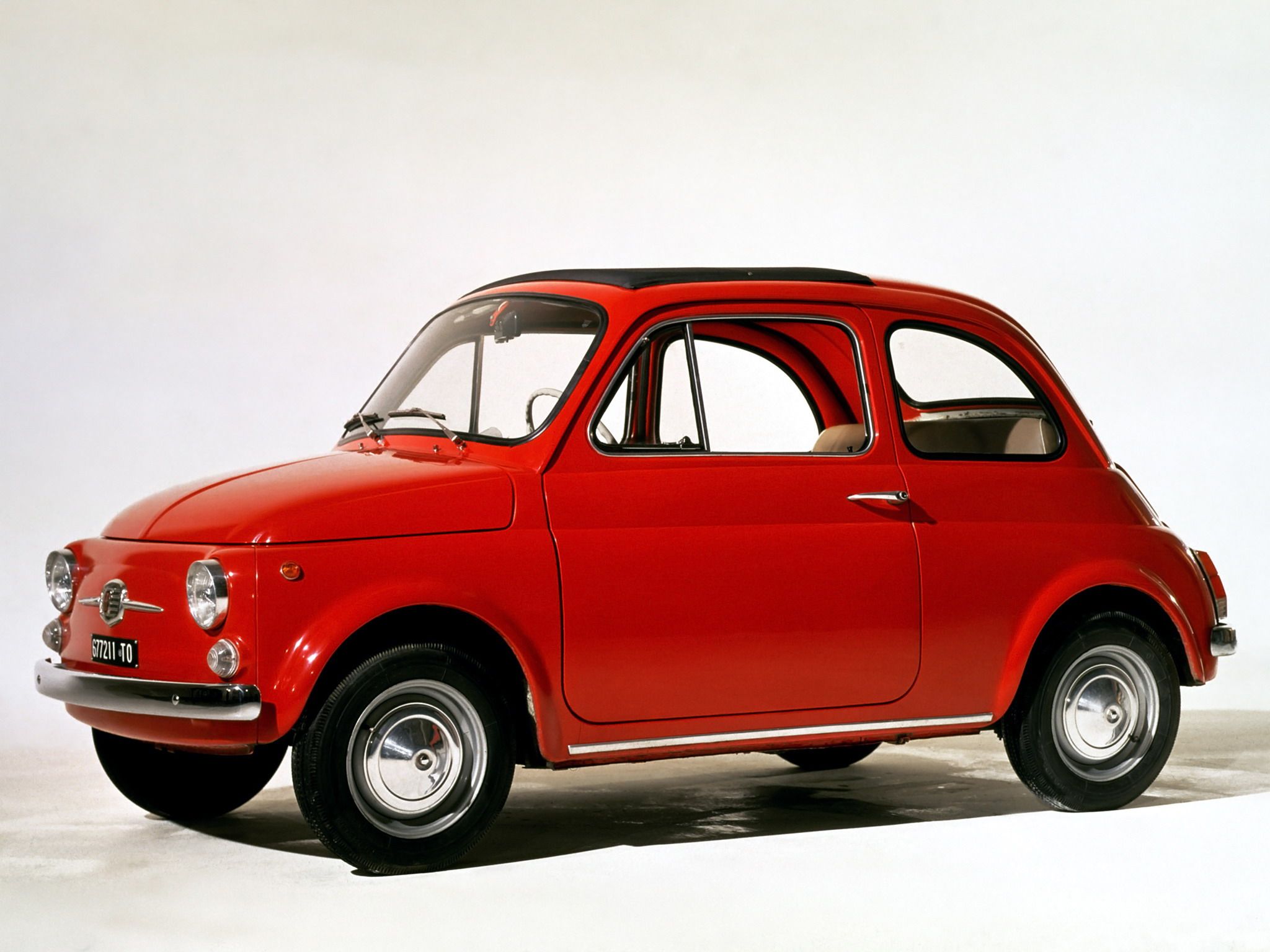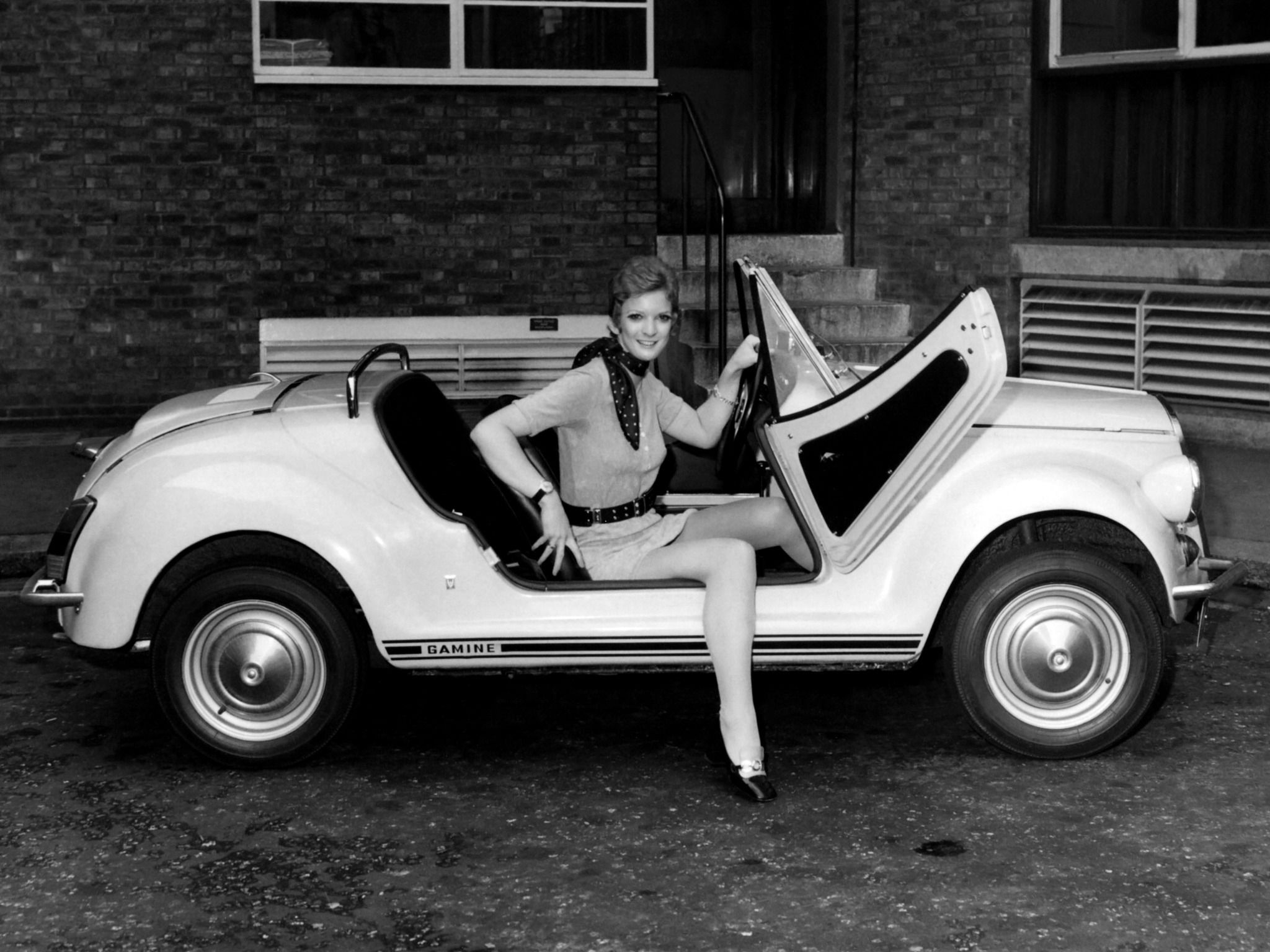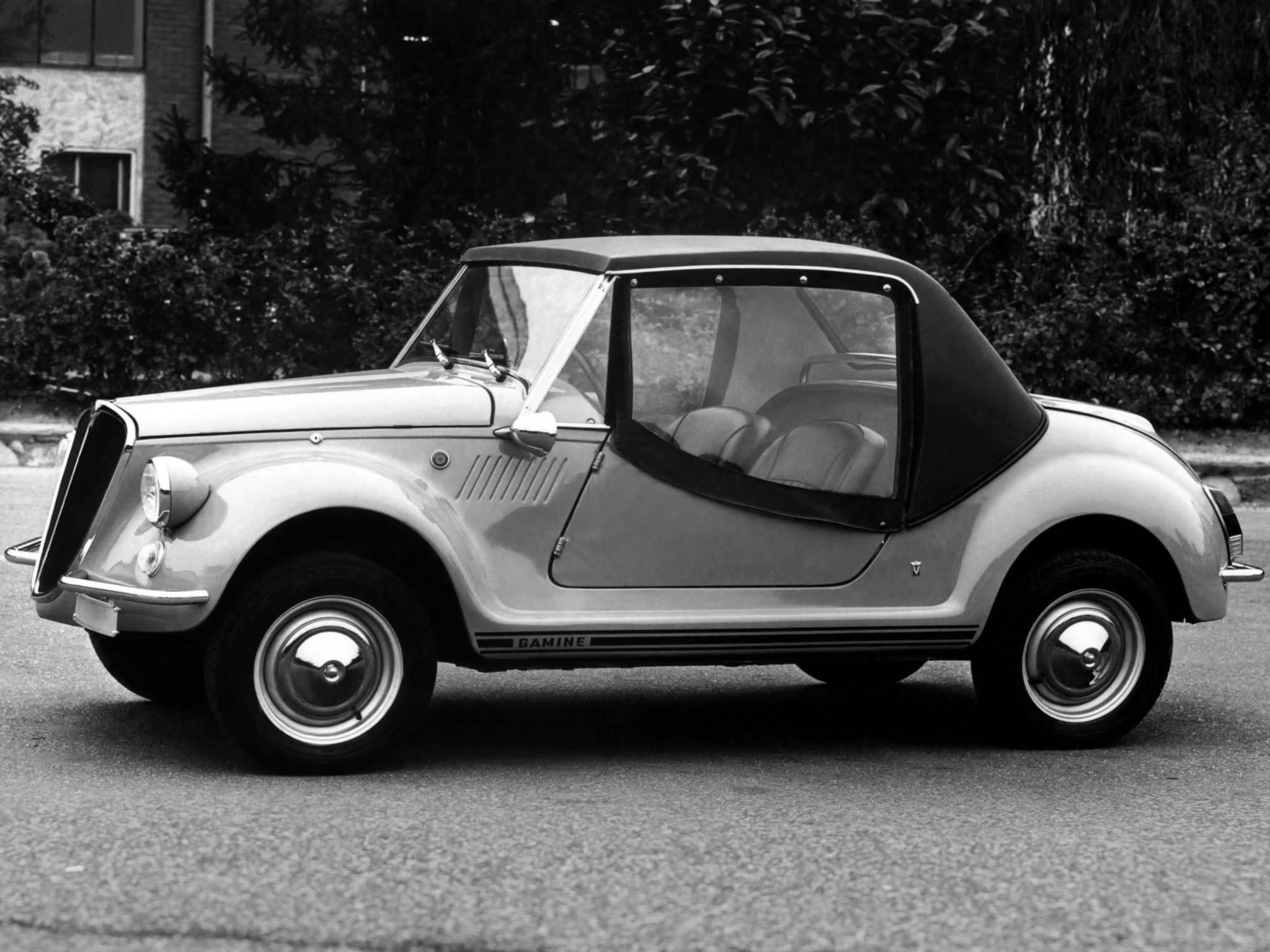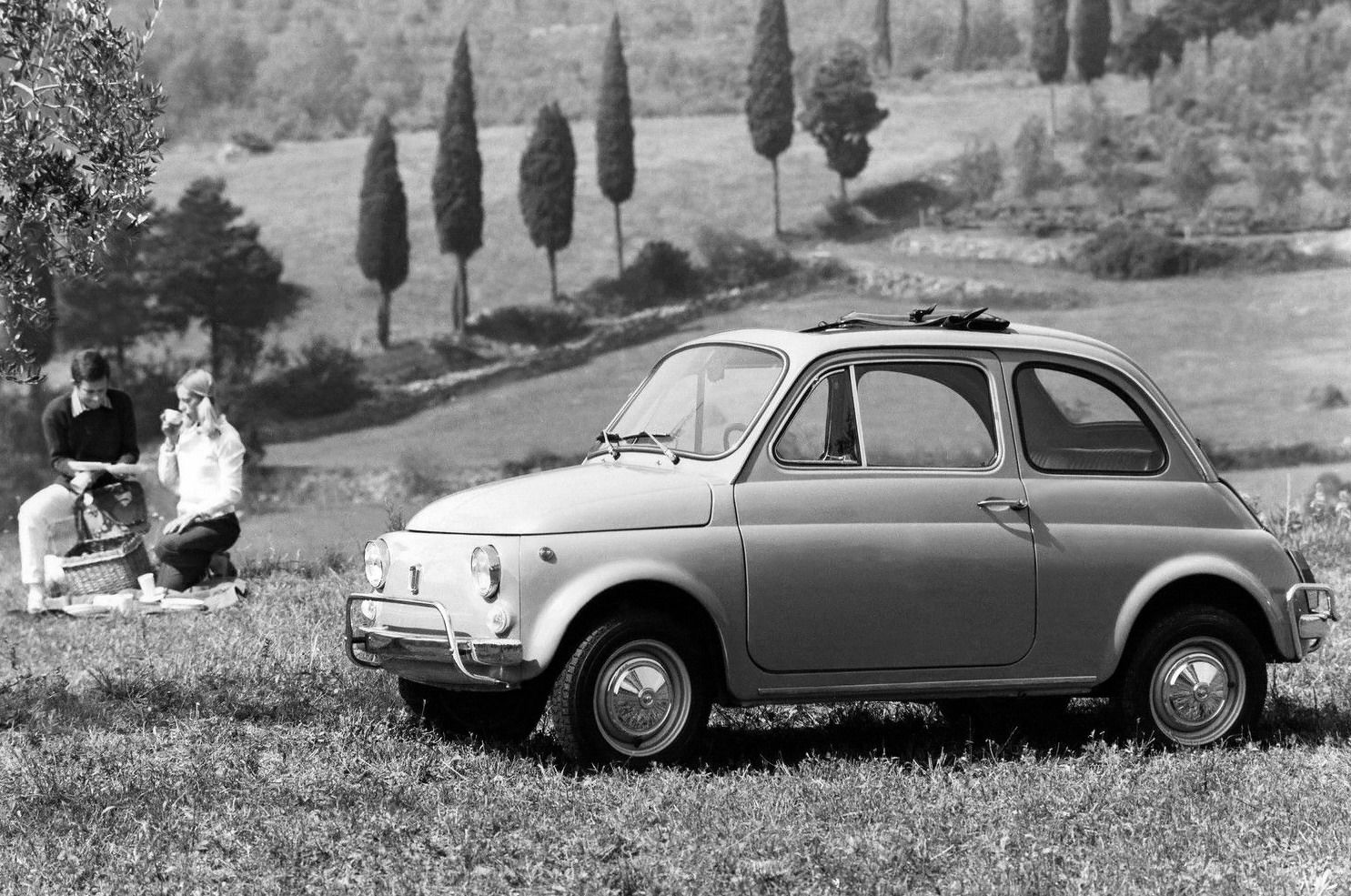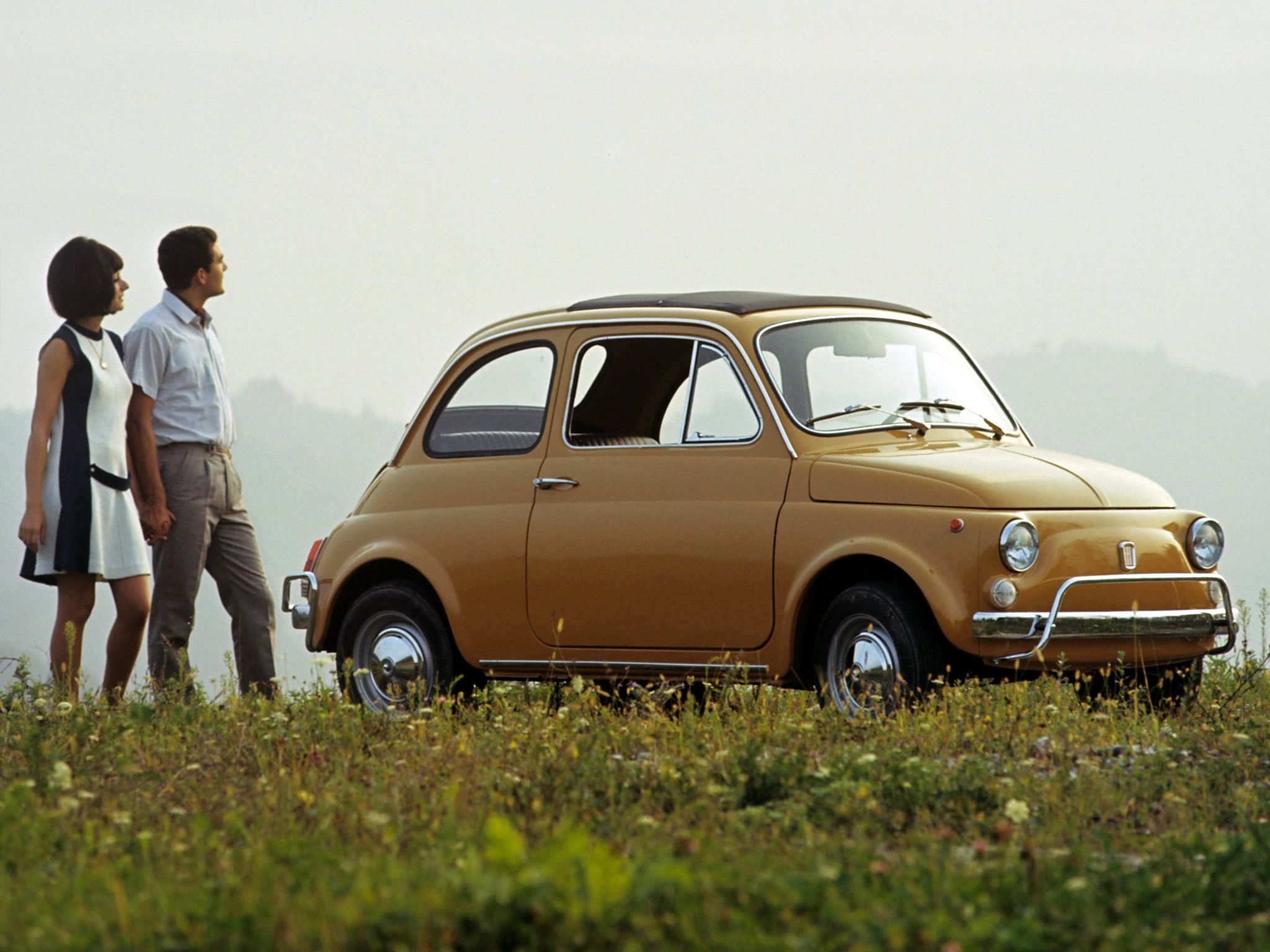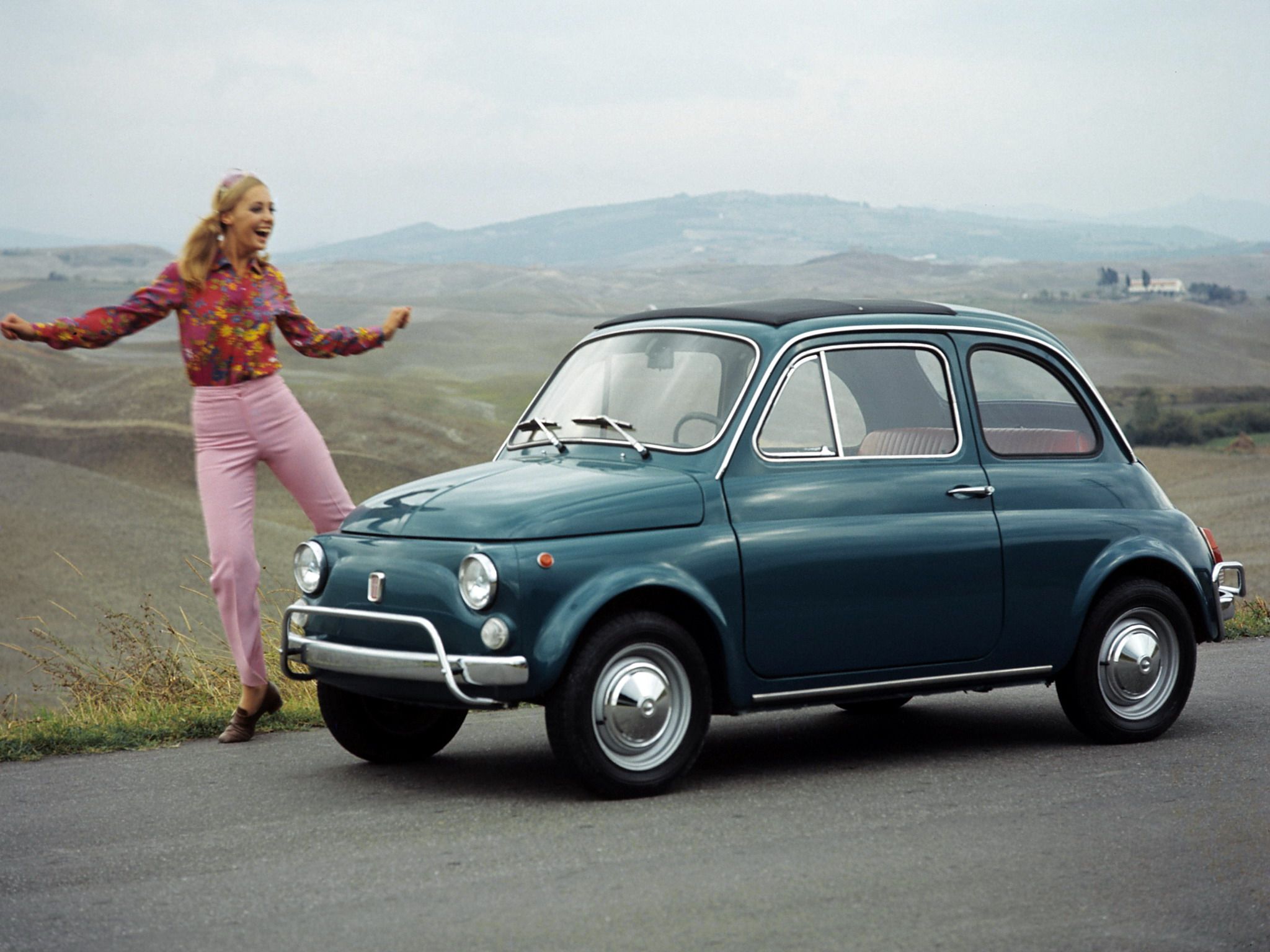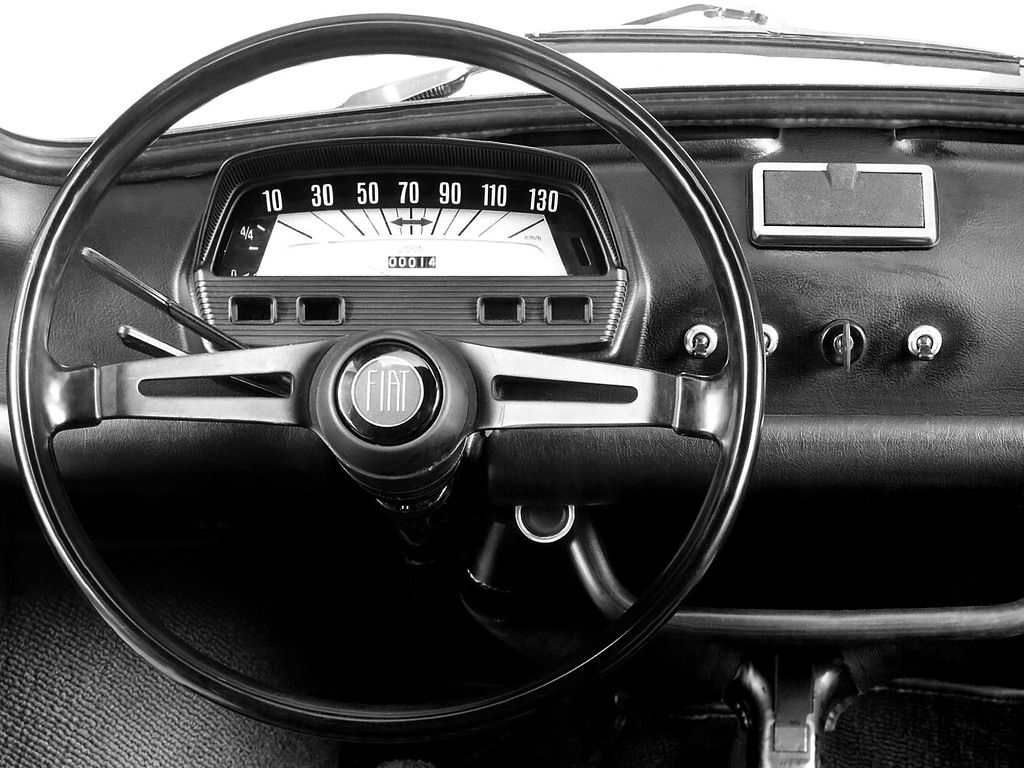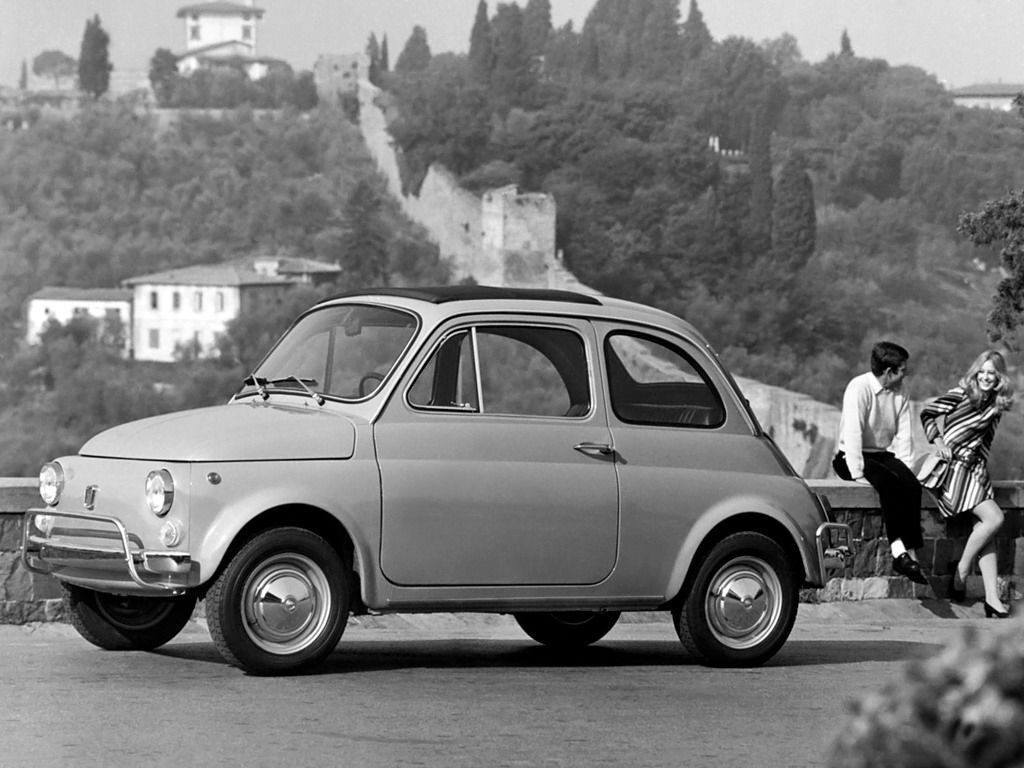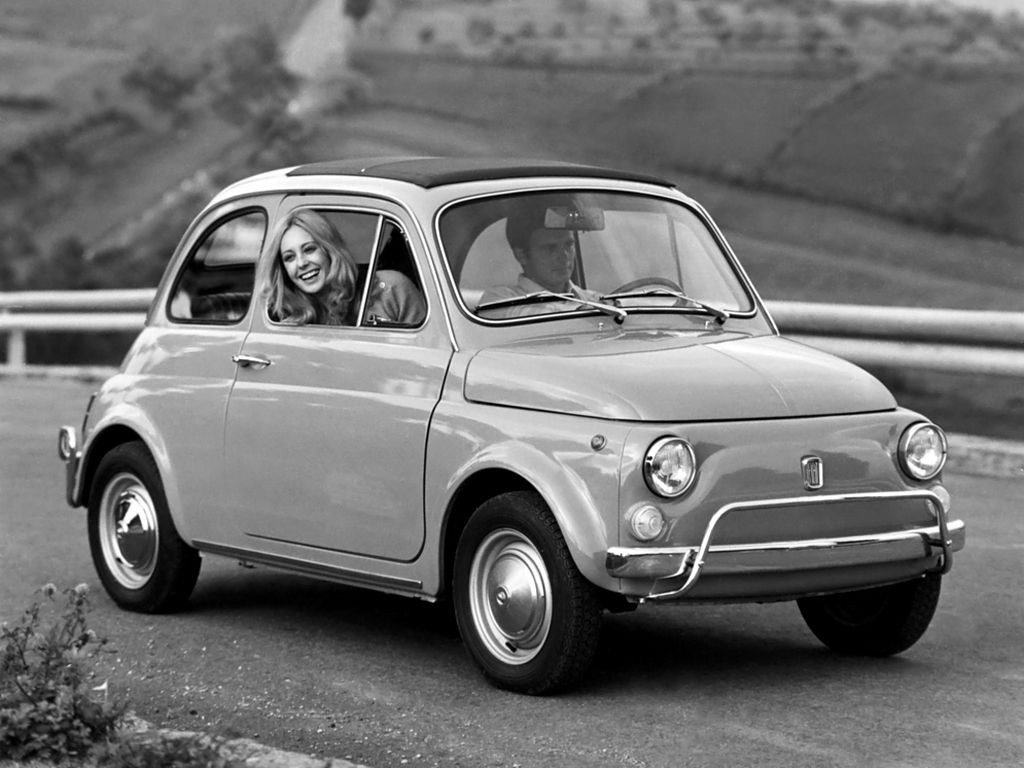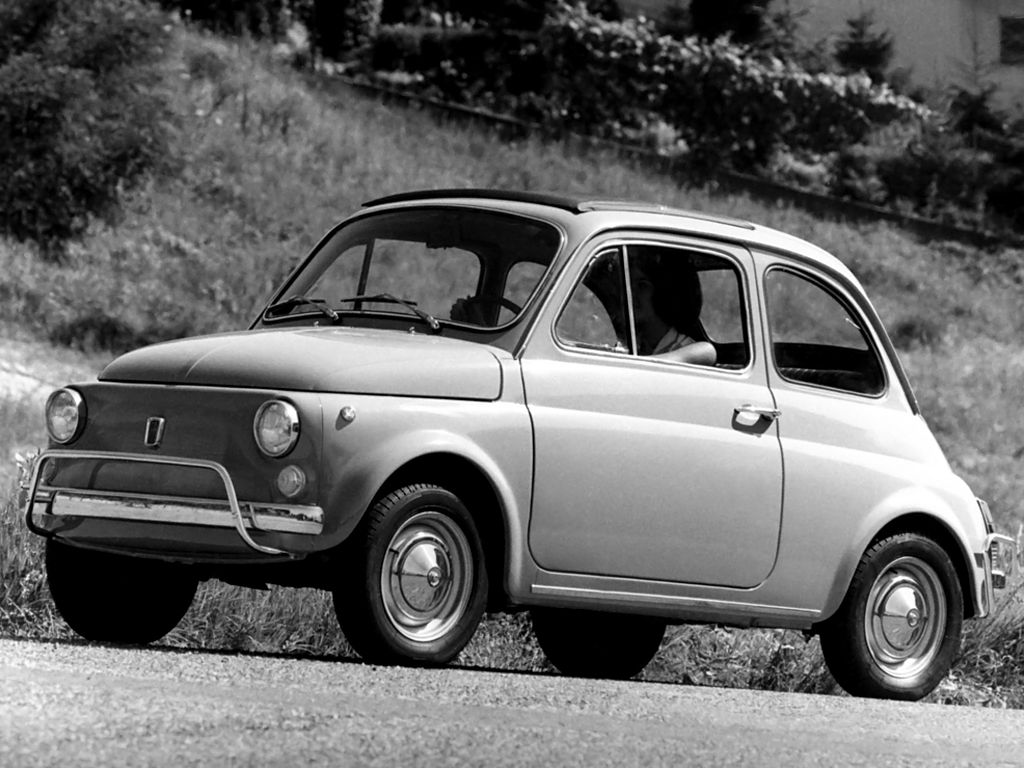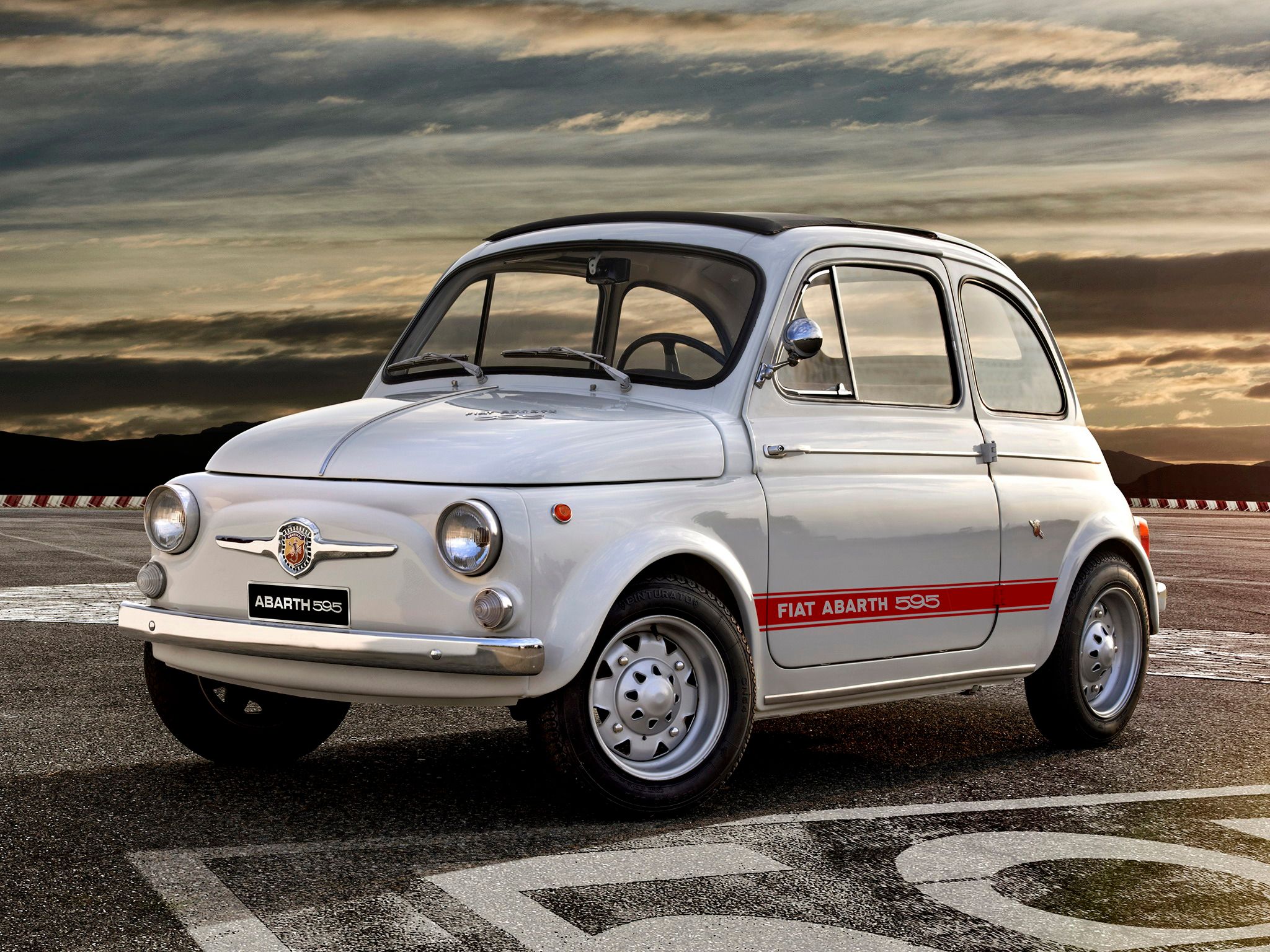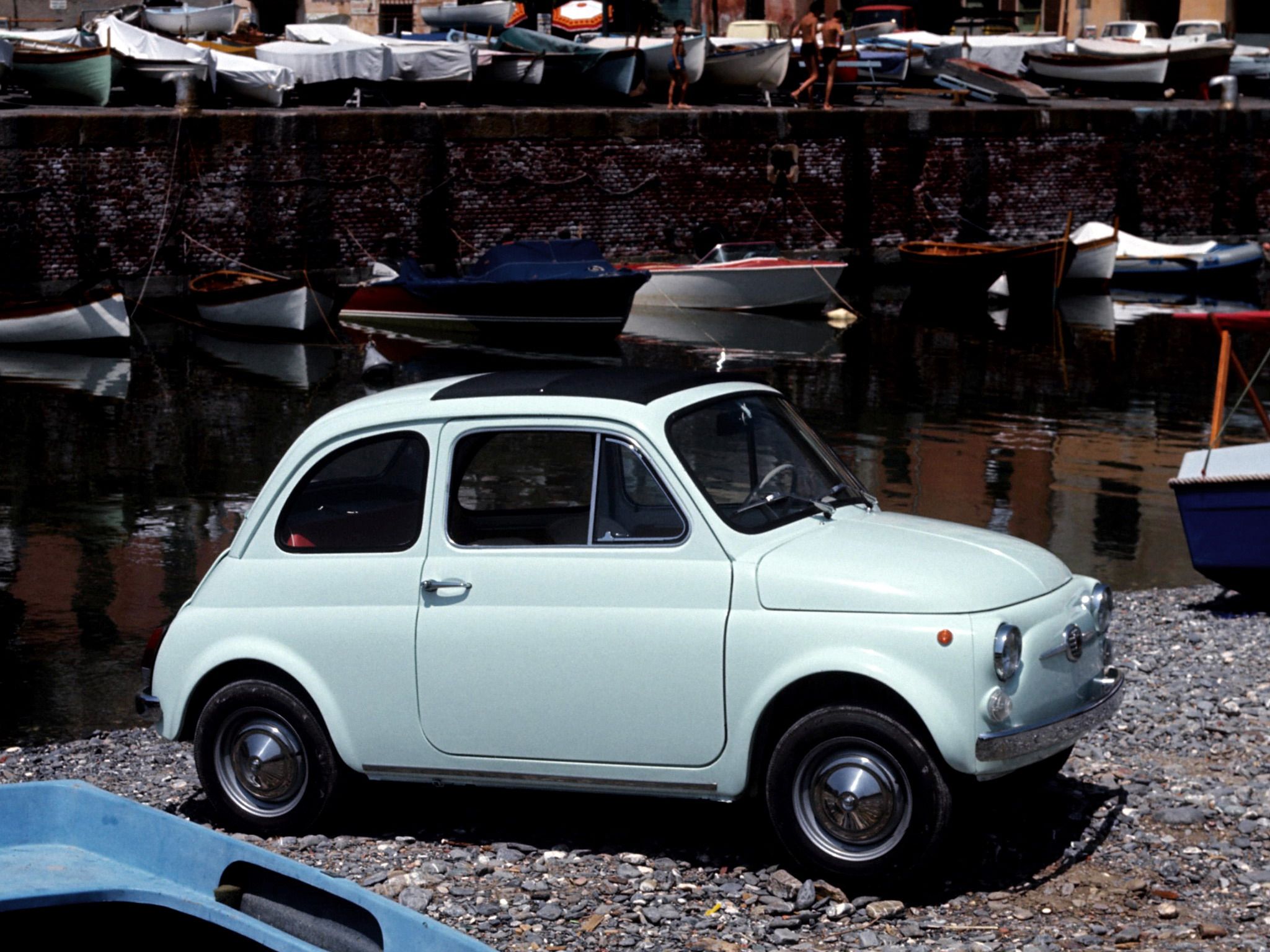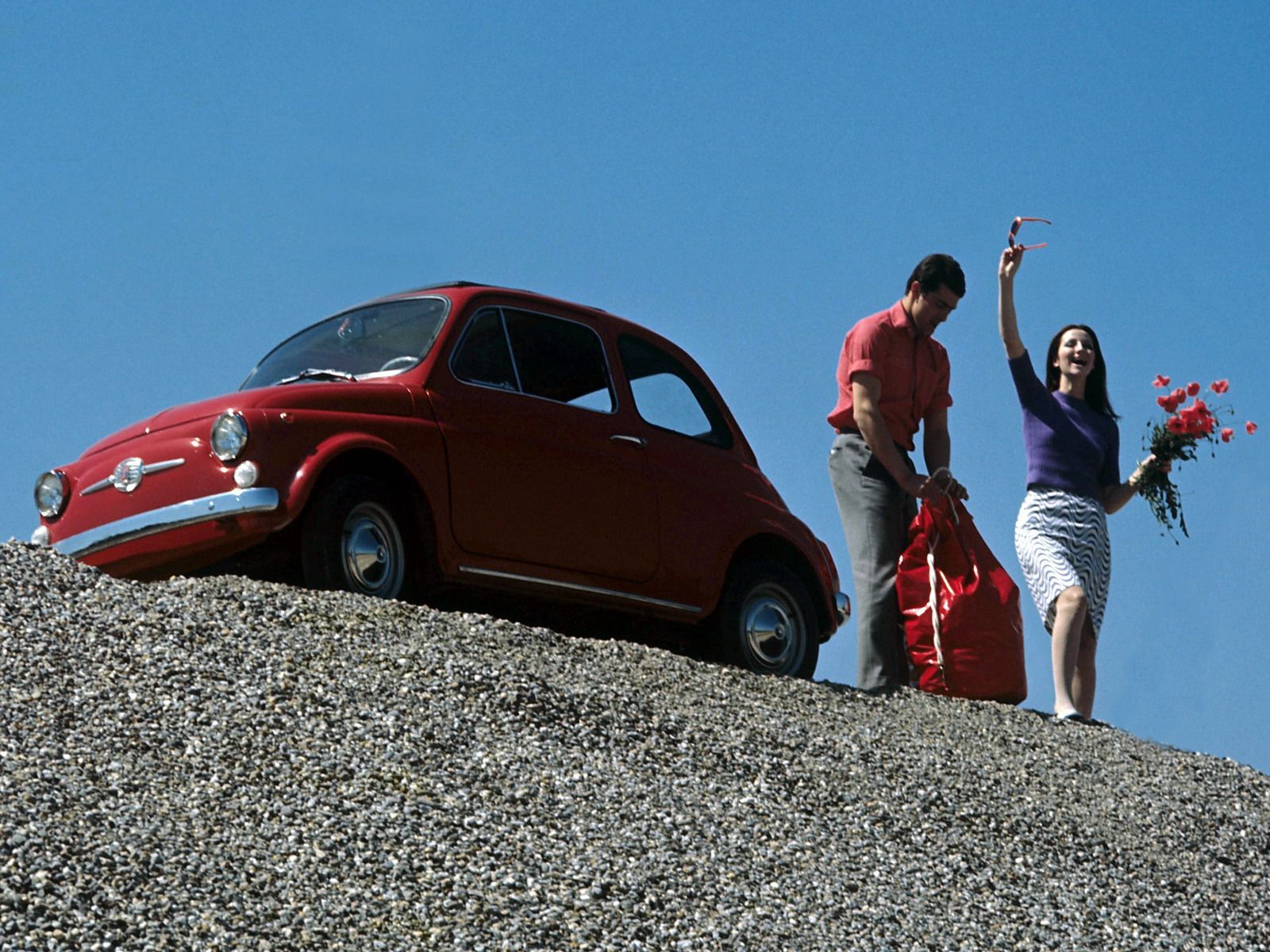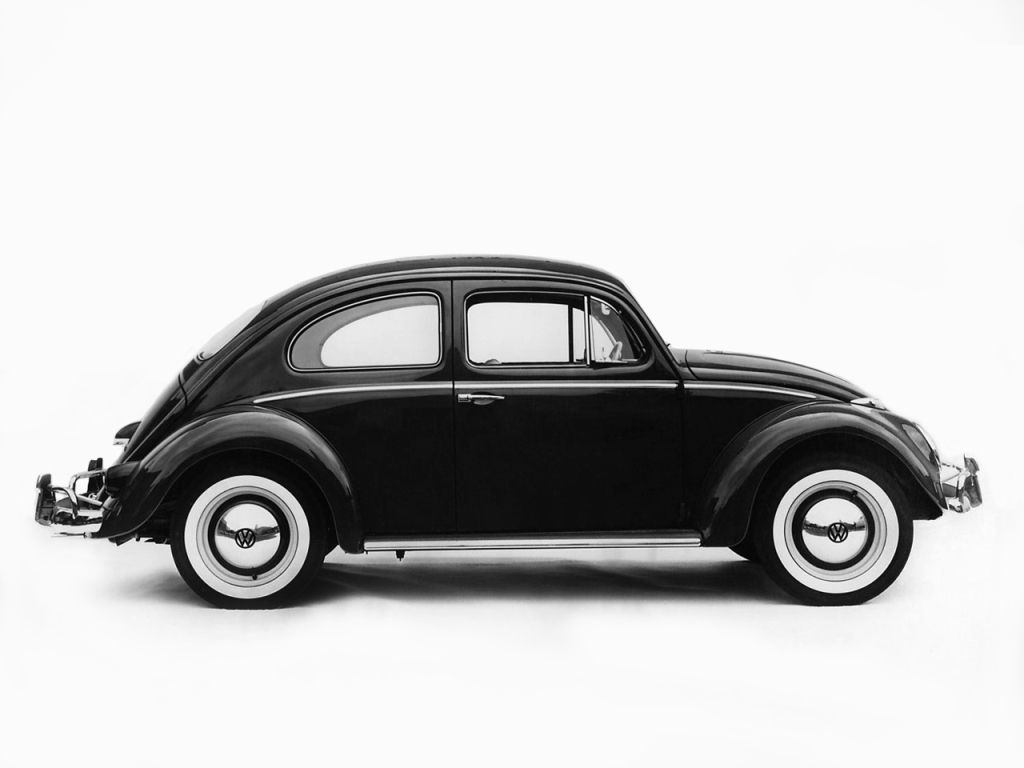It’s not often that a car becomes so indelibly tied to an automaker that the two become nearly synonymous, but that’s the case with the Fiat 500. While the new, third-generation 2007 Fiat 500 was created in 2007, its predecessor was first launched a half-century prior. Also known as the “Cinquecento” in Italian, the second-generation, or “Nuova” (“New”) 500 was originally billed as affordable, practical, small car for scooting around town. More importantly, it’s the model that marked the rebirth of Fiat->ke30 and the beginning of recovery for post-war Italy. Nearly 4 million examples of the vehicle were produced over the course of its 18-year production, and today, it remains a true icon of European motoring.
Through the years, the 500 saw a few different body styles and minor equipment changes, but the basic formula remained unaltered from the original. The result was an enormous success for Fiat, and today, it remains part of the automaker’s identity, providing inspiration for the current model with the same combination of nippy performance, small packaging, big practicality and eye-catching looks.
Simply put, the Nuova 500 was, and continues to be, Fiat’s most famous car of the people.
Continue reading to learn more about the 1957-1975 Fiat 500.
1957 - 1975 Fiat 500
- Make: Array
- Model: 1957 - 1975 Fiat 500
- Horsepower: 13
- Torque: 20
- [do not use] Vehicle Model: Array
Model History
Fiat introduced the Nuova 500 in 1957 as a replacement for the highly successful “Topolino” (“Little Mouse”) 500 produced between 1936 and 1955. Although the Topolino was technically a "Fiat 500," it had a front engine and bore no resemblance to the Nuova. At the outset, the Nuova 500 shared several similarities to the larger Fiat 600, including a rear-mounted engine driving the rear wheels, independent suspension at each corner and rear-hinged “suicide-style” doors.
Initially, sales were low, which prompted Fiat to introduce two new models – the “Economica” and the “Normale.” Both came with a slightly more potent (ha!) 15-horsepower, two-cylinder engine, while the Economica was cheaper and the Normale offered more creature comforts.
By the late ‘50s, the 500 saw success as a racer, taking first, second, third and fourth at the Hockenheim 12-Hour endurance race. To capitalize on this, Fiat offered a Sport model in 1958, which had a larger, 499 cc engine equipped with a new camshaft, valves, cylinder head and fuel system, boosting power to 21.5 horsepower.
Styling was enhanced with a red racing stripe along each flank, and paint options expanded to include a two-tone color scheme. A solid metal roof helped with chassis rigidity compared to the open, canvas-covered roof found on the standard model. However, Fiat also offered an open-air 500 Sport in 1959.
In 1960, the “Giardiniera” (or “Gardener”) model was introduced, bearing a wagon-like design and a wheelbase stretched by nearly 4 inches. To save space, the Giardiniera had its engine rotated 90-degrees clockwise. This helped to create a flat load surface in the rear. Along with the wagon came the 500D, which was equipped with the same 499 cc engine as the Sport, but only produced 18 horsepower. The D also had a canvas roof that didn’t fold back as far as previous models
The F supplanted the D in 1965, with the doors getting a more traditional front hinge. The transmission was also revised with a more robust clutch, driveshaft and differential. In 1968, Fiat added the “Lusso” (“Luxury”) model, which came with features like a revised dashboard, reclining seats and carpeting.
The last 500 produced before its rebirth in 2007 was the 500 “Rinnovata” (“Renewed”), which had a 594 cc, 18-horsepower engine plucked from the Fiat 126, light alloy wheels, and a downgraded interior compared to the Lusso. With the release of the 126, sales for the 500 fell and Fiat decided to end production. In total, 3,893,294 units were produced.
Throughout the years, there were several tuned and modified versions of the 500. The performance company Abarth had a hand in creating many of these, as did Vignale and Gianni.
Exterior
Placing the second- and third-generation 500 side-by-side, it’s readily apparent where the new car draws its styling cues. A rounded, bubble-shaped body, circular headlights, short overhangs and diminutive proportions are present in both.
The second-generation was designed by Dante Giacosa, and is widely considered to be one of the first modern city cars. Not only was it attractive to look at, the tiny size was well-suited to zipping through traffic and squeezing into tight parking spaces.
The original model measured 52 inches in height, 52 inches in width and 117 inches in length. The small body was also surprisingly aerodynamic, boasting a drag-coefficient of only 0.38 – quite low for its day.
The roof came with an open-top that was covered by a foldable fabric, offering either sunshine or weather protection depending on conditions.
Over the course of its 18-year run, the exterior of the second-generation 500 changed very little, with the odd chrome styling element either added or taken away throughout the model’s progression.
Exterior Dimensions
|
Length |
2970 MM/116.9 Inches |
|
Width |
1320 MM/52 Inches |
|
Wheelbase |
1840 MM/ 72.4 Inches |
|
Curb weight (without a driver) |
470 kg / 1036 lbs |
Interior
Despite its small exterior size, the 500 was widely praised for the amount of stuff it was able to carry, including four adult passengers and a huge amount of luggage. This trait was enhanced in the LWB Giardiniera model, which saw many units enlisted as workhorses for Italian companies.
Inside, things are simple. The dash uses a minimal number of buttons and switches, and a single gauge sits behind the enormous thin-rimmed steering wheel. It’s spartan and purposeful, exactly like an economical car of the people should be.
Drivetrain
When the second-generation 500 was first introduced, it had a rear-mounted, air-cooled, two-cylinder engine displacing 479 cc. Output was a mere 13 horsepower and 20 pound-feet of torque. This powerplant was mated to a four-speed, non-synchronized manual gearbox with a floor-mounted shifter.
While laughably underpowered by today’s standards, the car weighed only 1,036 pounds, which meant it could still reach a top speed of 53 mph. Later iterations saw a bump in power and engine size, although never above the 600 cc and 23-horsepower mark.
Underpinnings included four-wheel independent suspension, with leaf springs up front and coil springs in the rear. The rear-mounted engine, extremely low curb weight and very direct steering offered fantastic handling characteristics, especially for anyone living in the city.
What’s more, the car was incredibly efficient, offering up to 63 mpg, an impressive figure even for a modern vehicle.
Finally, the 500 was known for its incredible durability, with many iterations performing well in long-distance rallies over rough terrain. One notable result was a win at the Liege-Brescia-Liege Rally in 1958 (only 13 of the 29 entrants finished, including all seven 500s).
Drivetrain Specifications
|
Type |
Line 2 |
|
Displacement |
479 cc |
|
Horsepower |
13 HP |
|
Torque net |
20 LB-FT |
|
Top speed |
85 km/h / 53 mph |
Prices
Back in the late ‘50s, you could buy a brand-new 500 for 465,000 Italian Lira, or about $260, not accounting for inflation. These days, the second-generation 500 is a highly collectible model, especially since the popularity of the modern third-gen. You can pick one up on the used-car market between $6,500 and $12,000, although there are premium, show-quality examples out there that will run you upward of $75,000.
Competition
The BMC Mini
A true icon of U.K. autos in the ‘60s, the Mini was first produced by the British Motoring Corporation in 1959. Like the 500, the Mini offered a small body, an affordable price, and surprising practicality. While the 500 mounted its engine in the rear, the Mini went with a front-mounted, FWD layout that saved a good deal of space in the interior for people and luggage, prompting automakers to copy the design for decades to come. The Mini’s low curb weight, independent suspension and low center of gravity made the car quick as well, resulting in a string of successes in the world of rally racing.
Read more about Mini's history here.
Volkswagen Beetle
When it comes to cheap transportation for the people, it’s hard to ignore the original Volkswagen Beetle ("People's Car"). The car actually has its roots in Nazi Germany. In 1934, Hitler approached Ferdinand Porsche about developing a simple, inexpensive vehicle capable of carrying two adults and three children. The engine would have to be powerful enough to cruise on the autobahn, but still deliver at least 32 mpg. The result was the enormously popular, rear-mounted, RWD, air-cooled Type 1 Beetle we know today, which saw an astounding 21.53 million units created before VW->ke94 ended production in 2003. And now you know why Porsche used rear engines almost exclusively for a long time.
Conclusion
As Fiat steps into the future, it still has one eye to the past. The tried-and-true combination of characteristics that made the Nuova 500 such a hit are, more of less, still present in its modern equivalent, which speaks volumes about the universal appeal of a small, affordable, fun car for the city. It teaches lessons that many automakers would do well to learn as they strive for success in the new global car market.
However, what makes the 500 stand out from its British and German rivals is its undeniable Italian charm, a trait most obvious when catching a reflection in a café window on a sunny day with the top open. This is a car that makes people smile, especially the individual behind the wheel.

